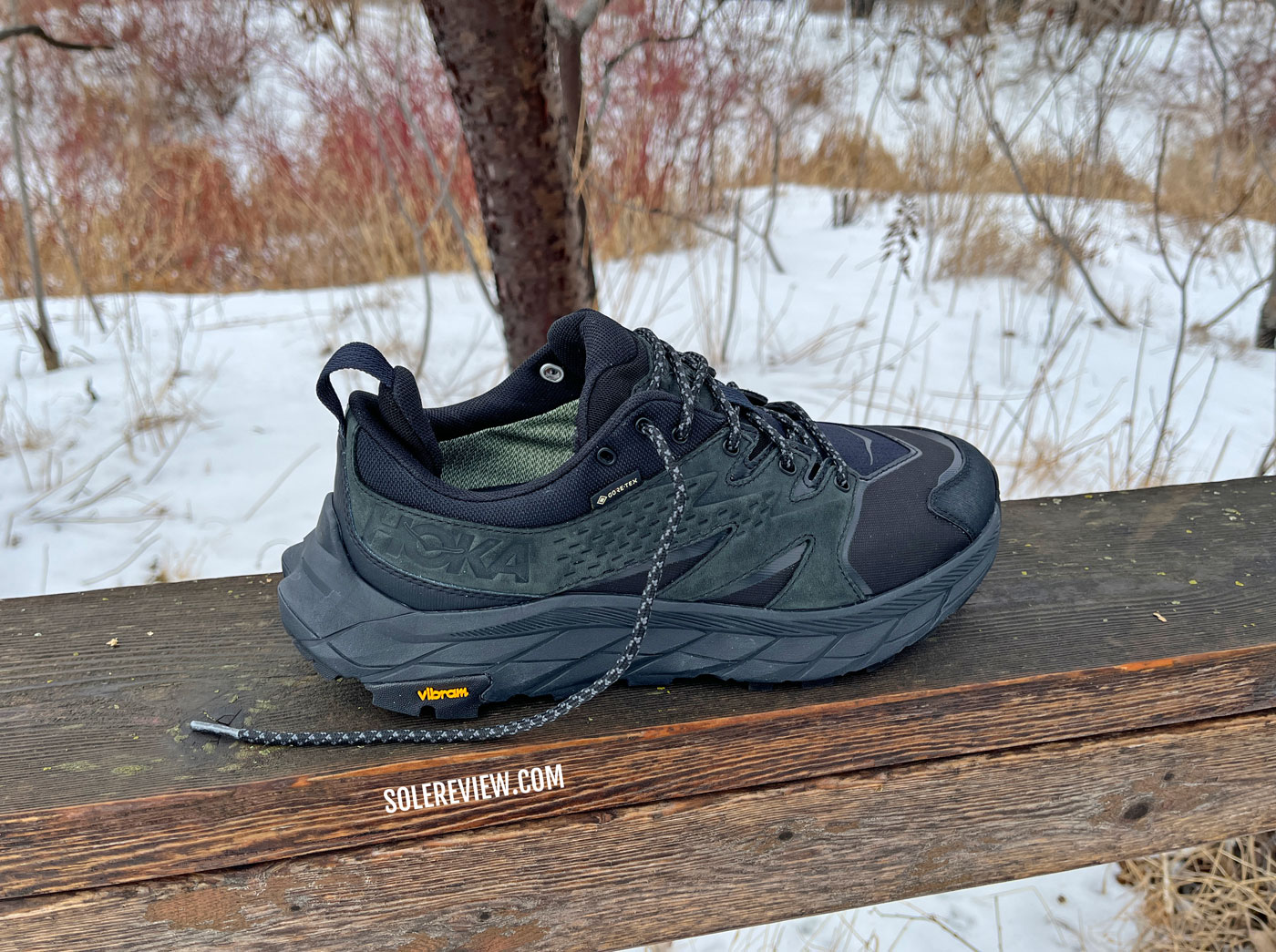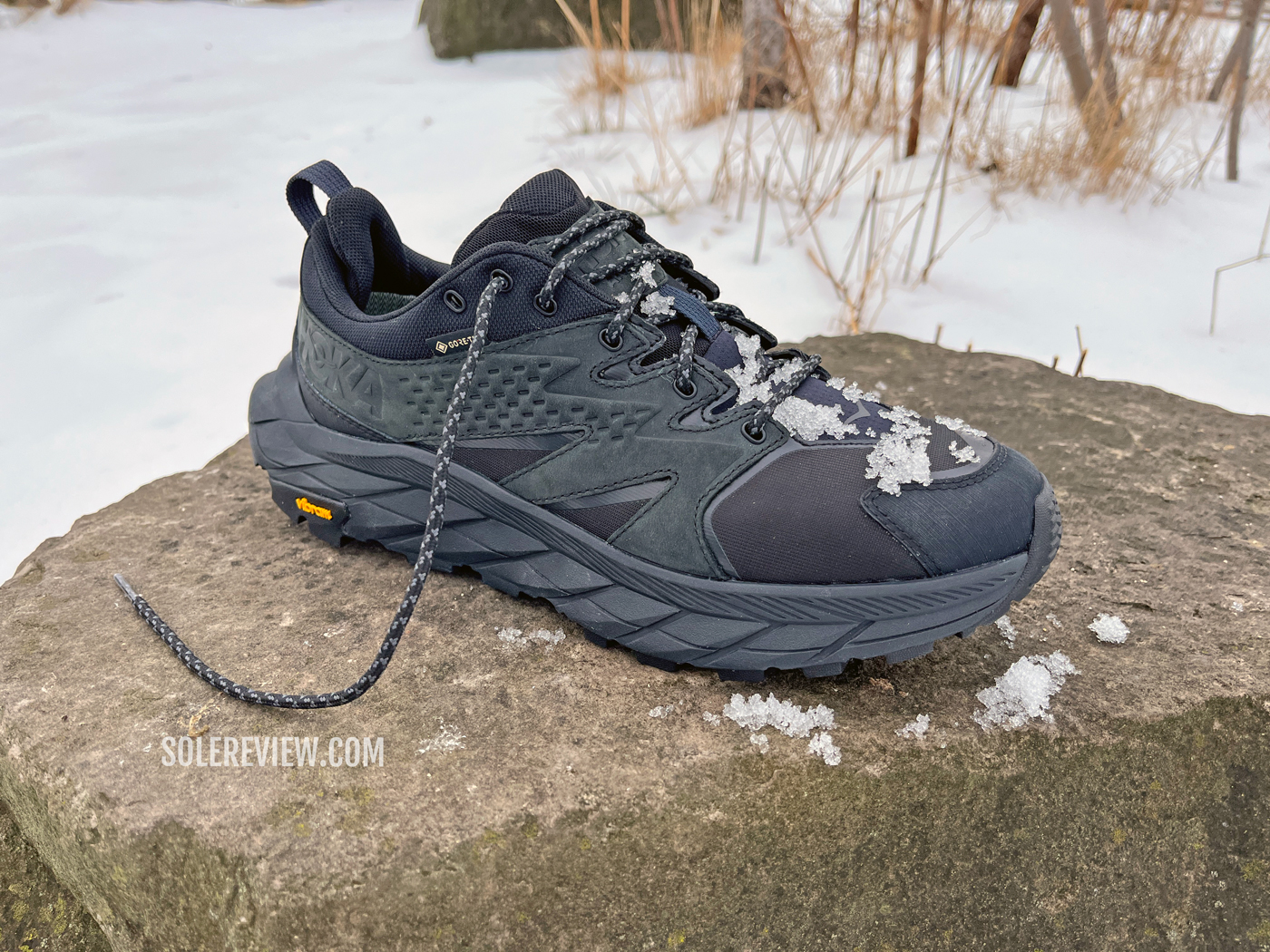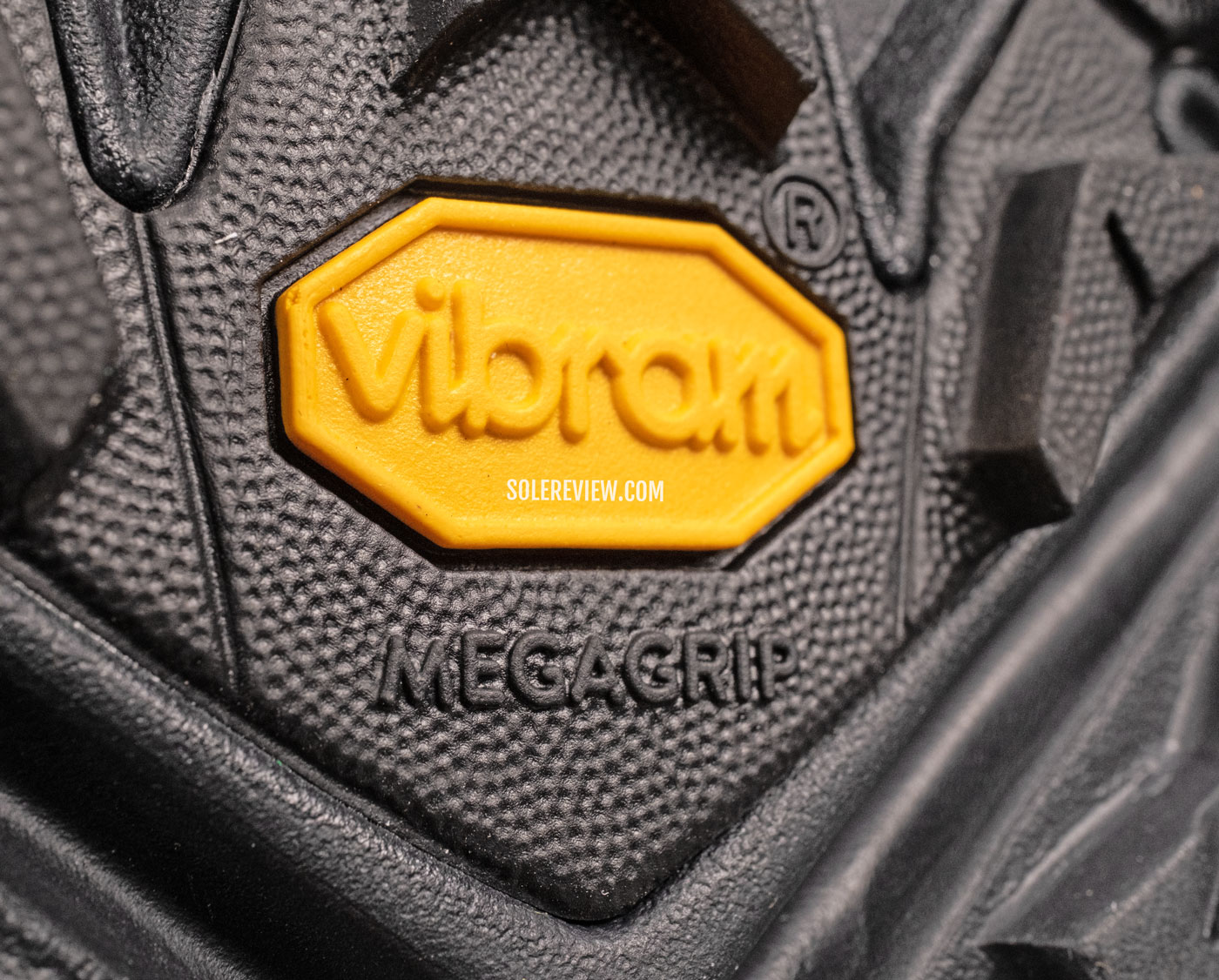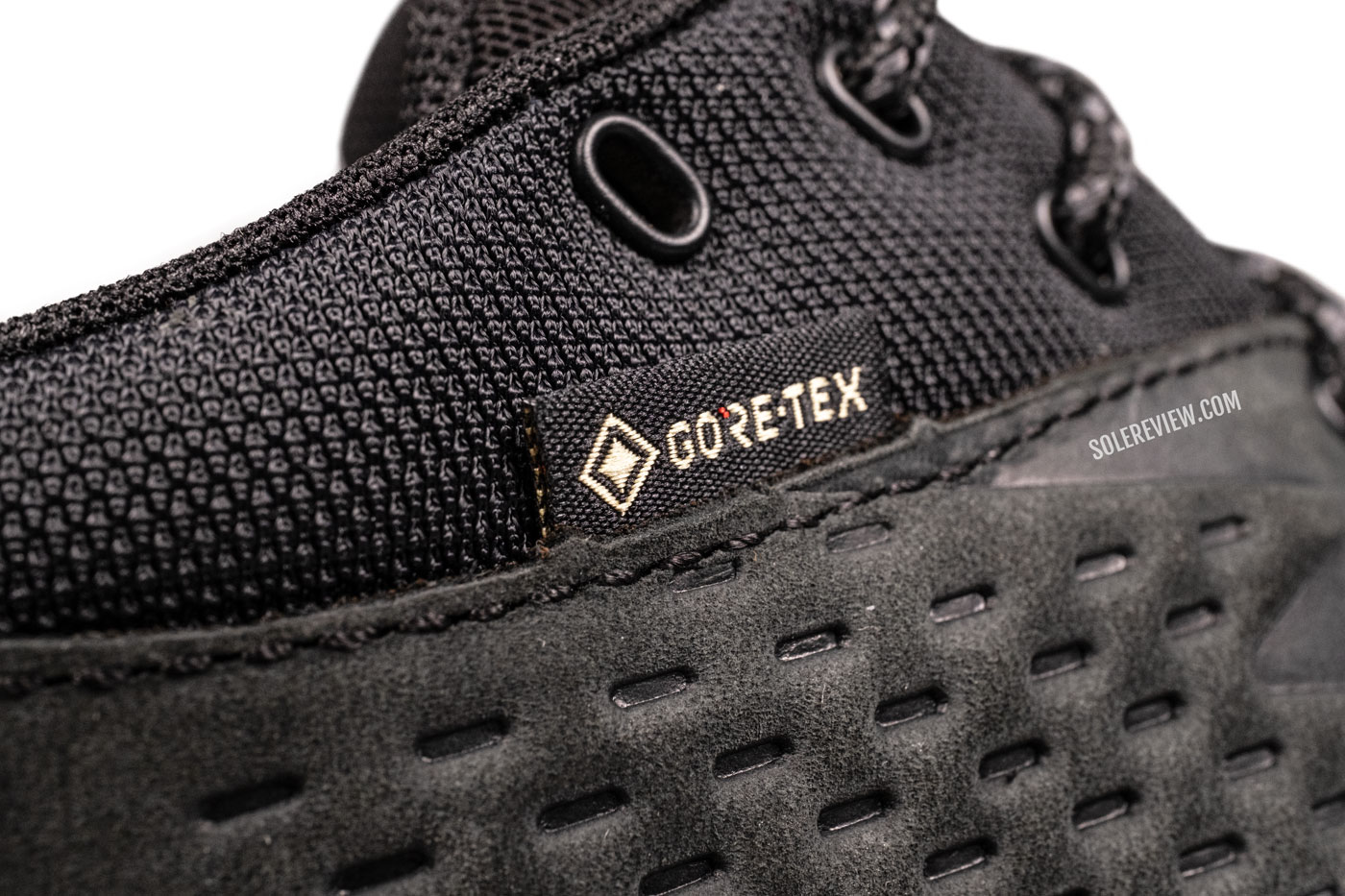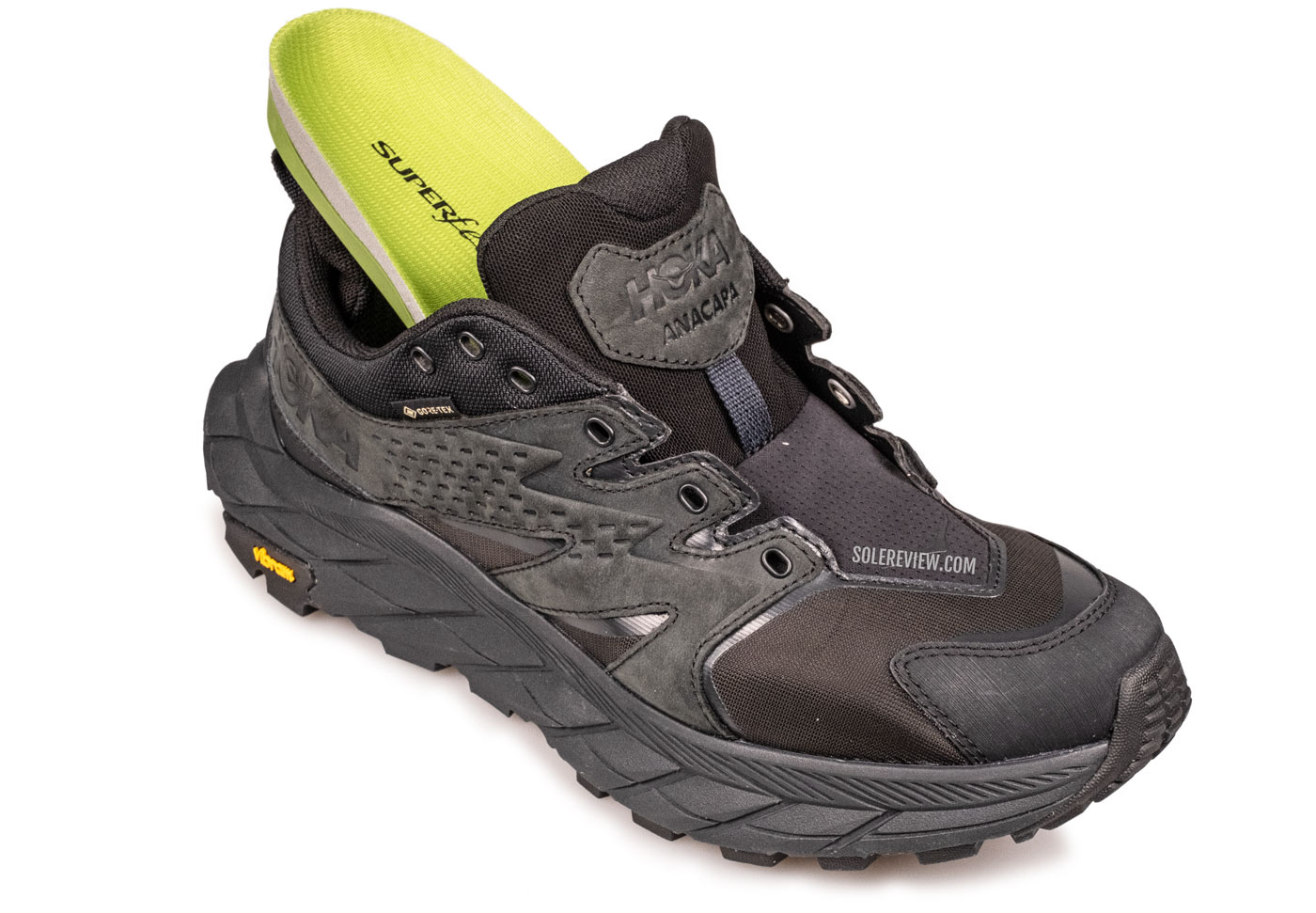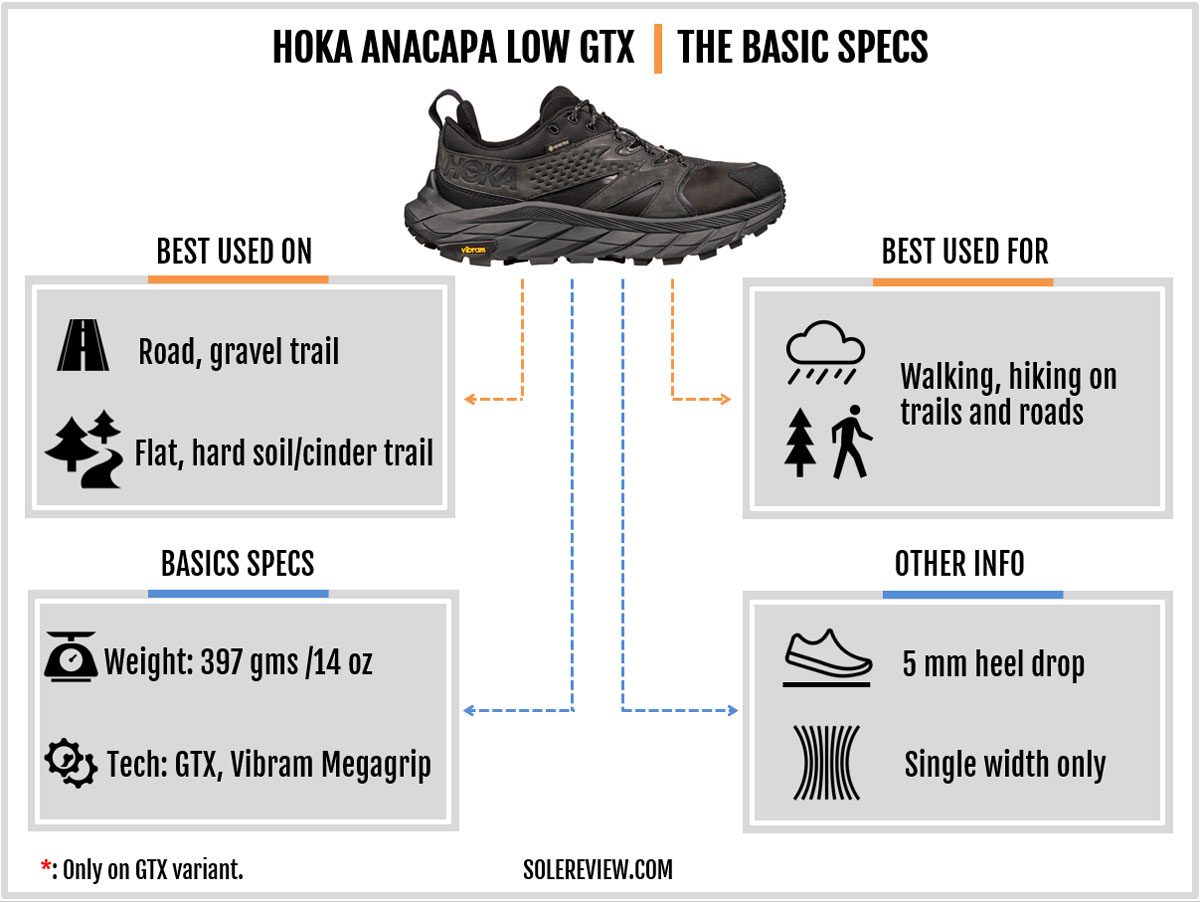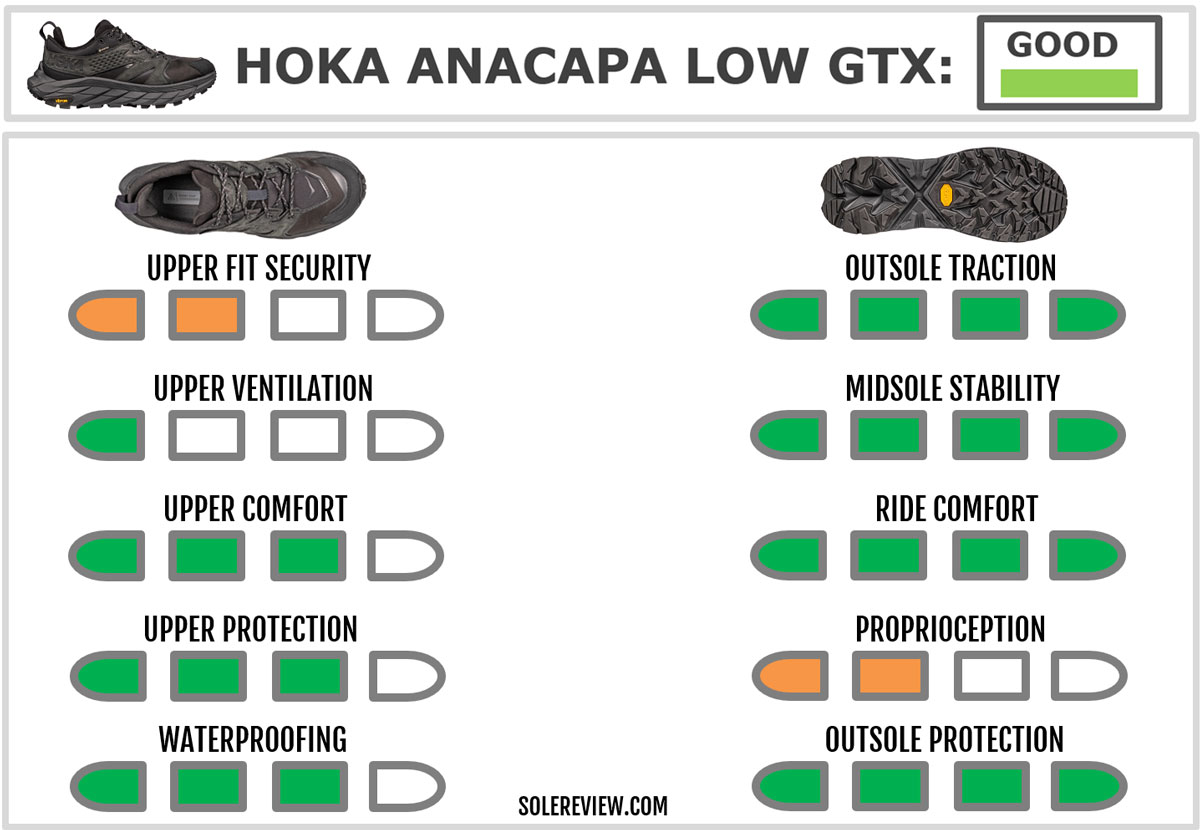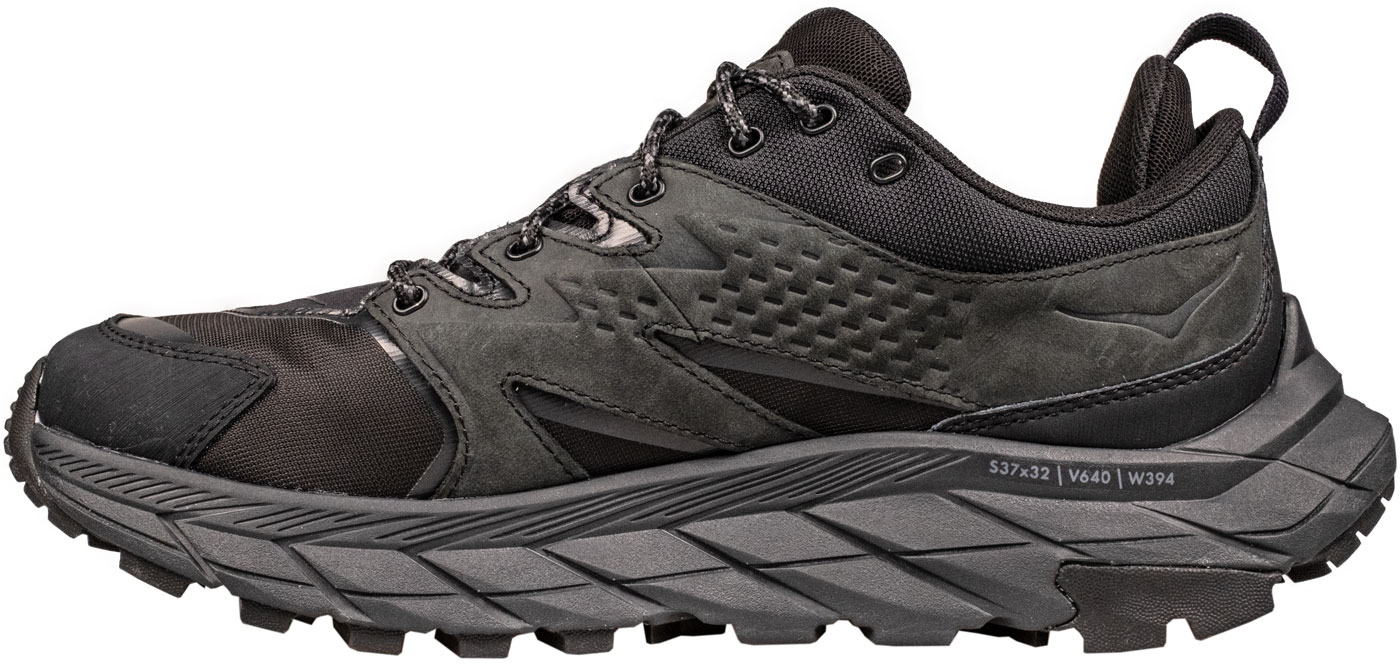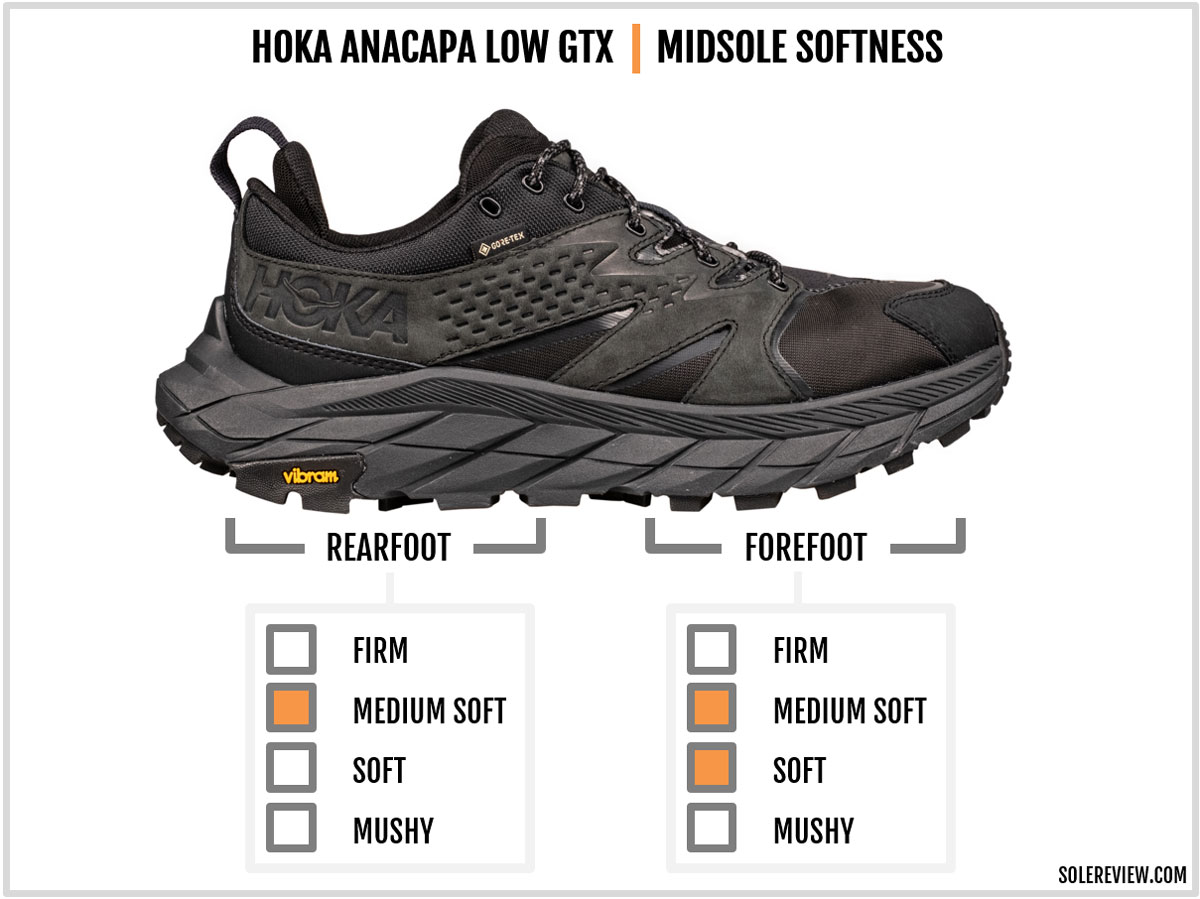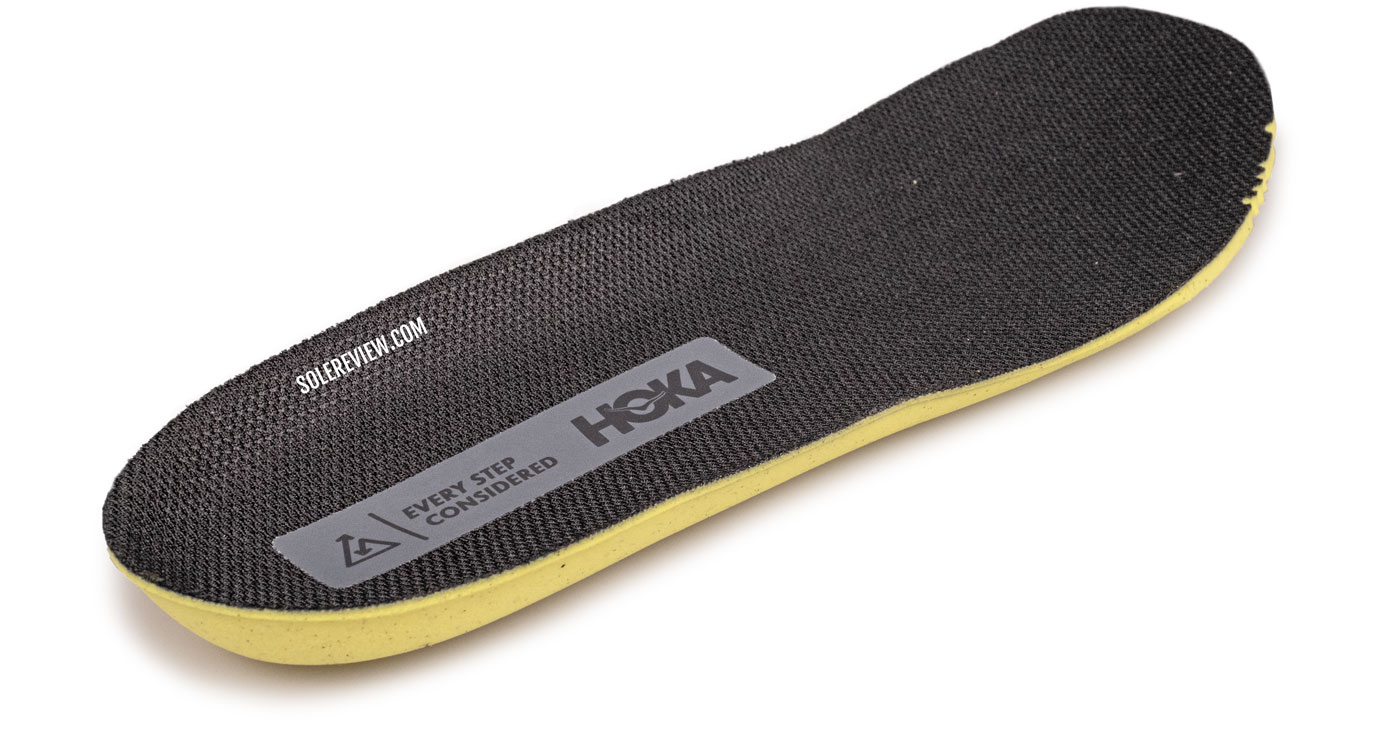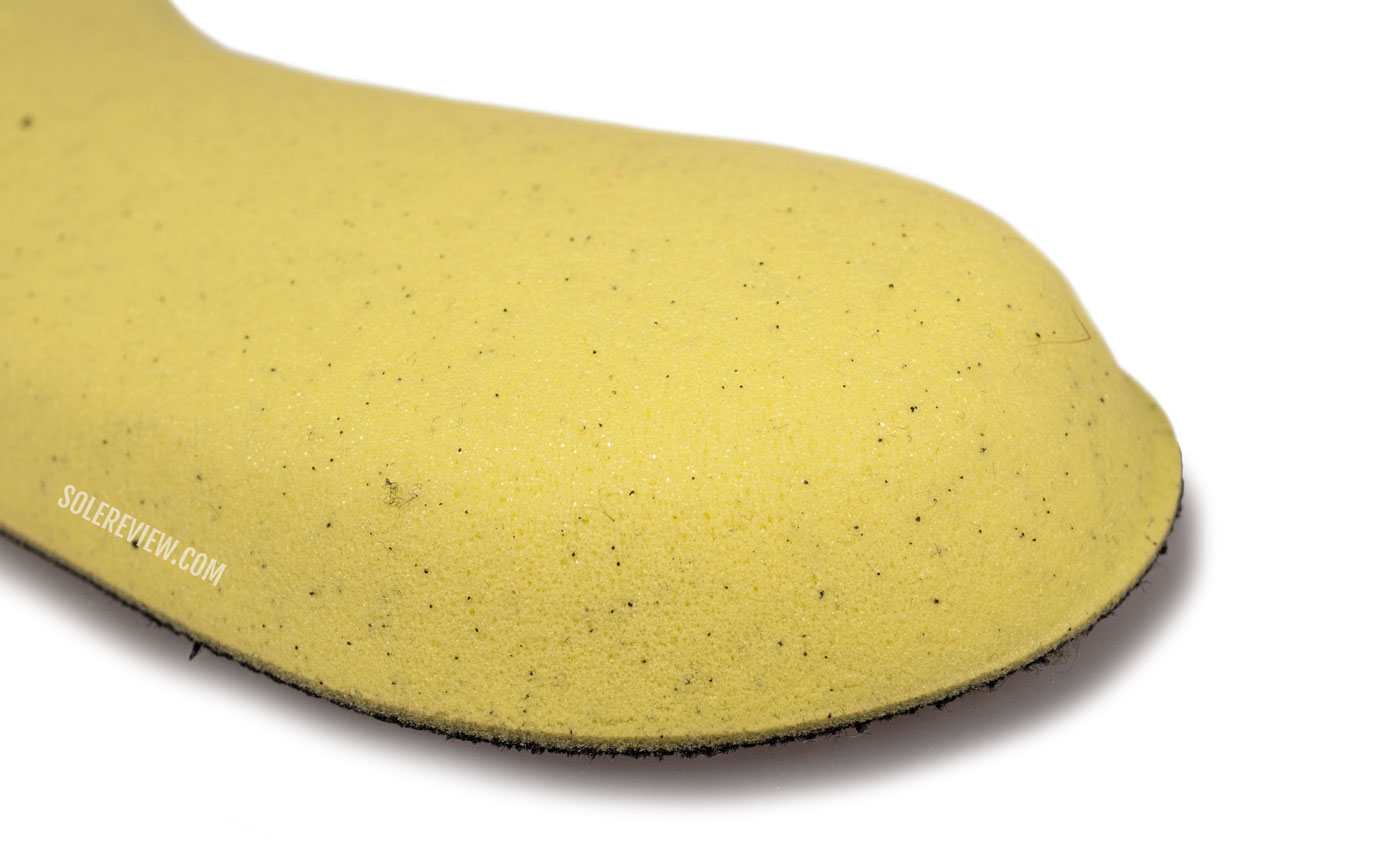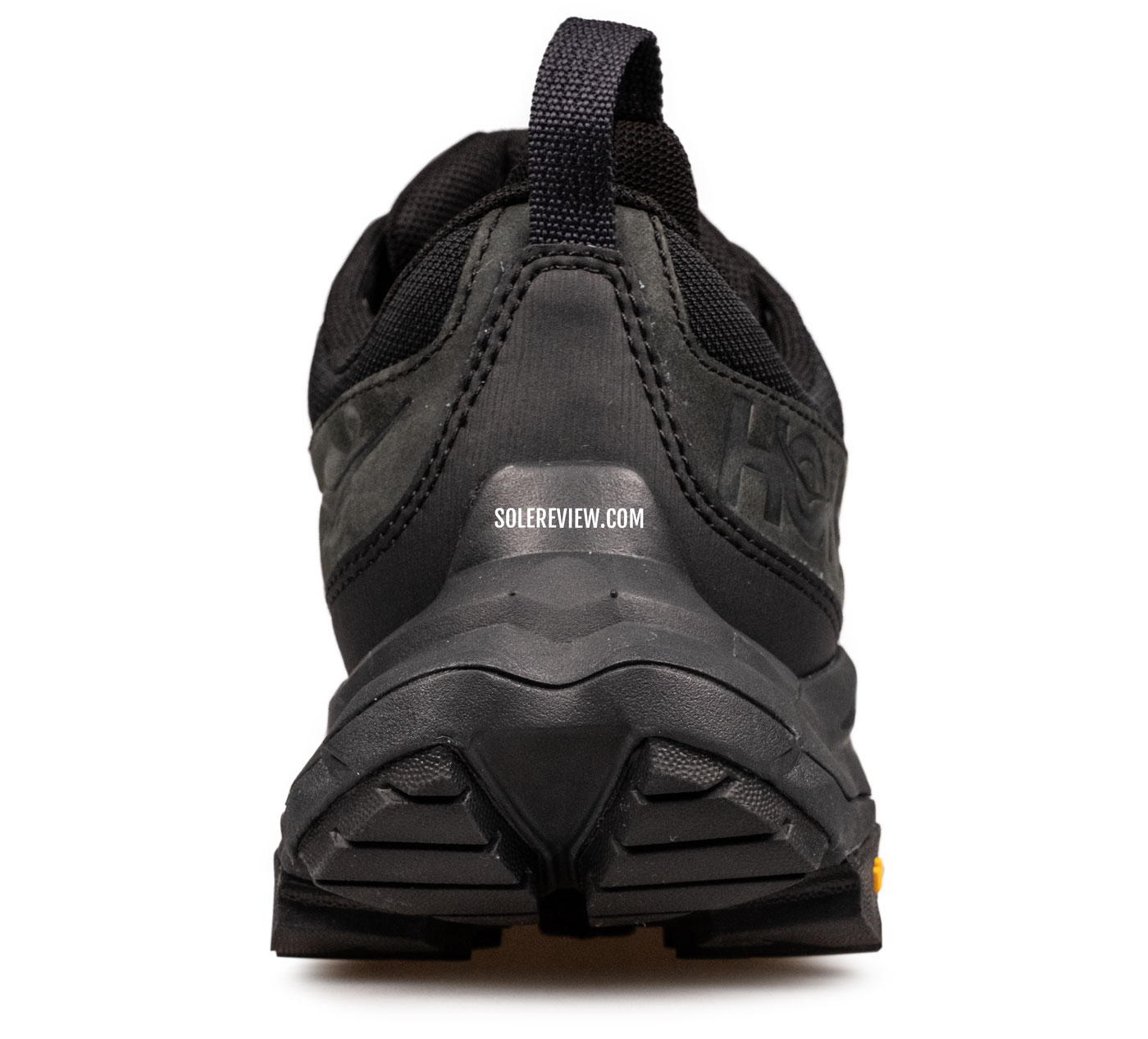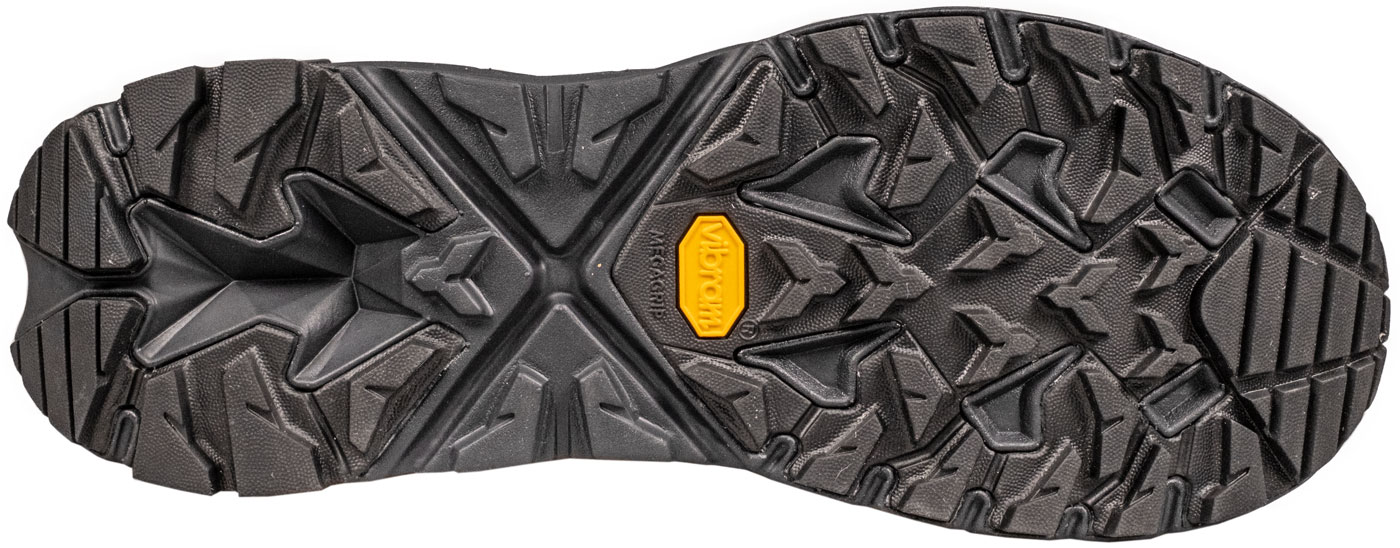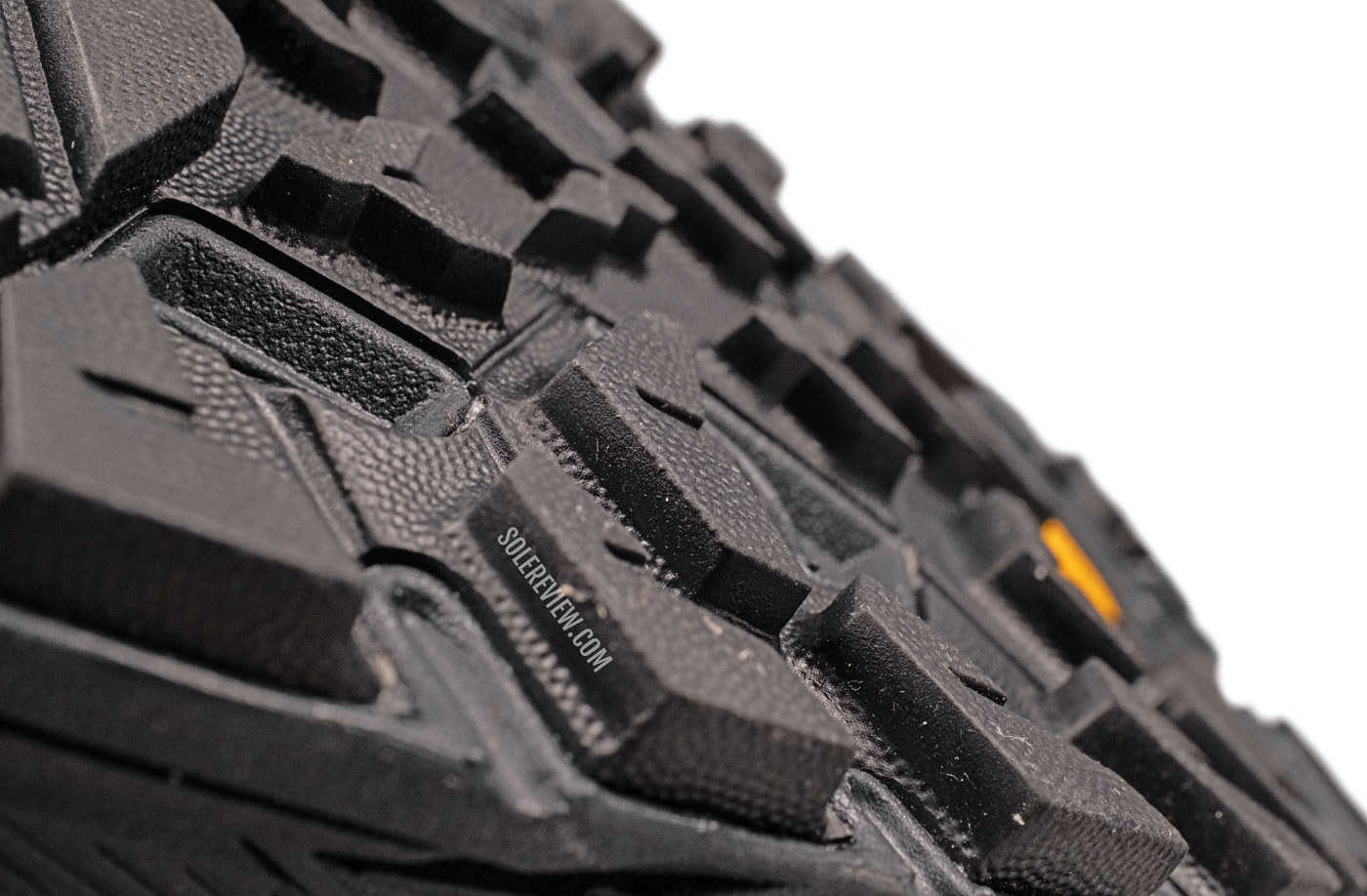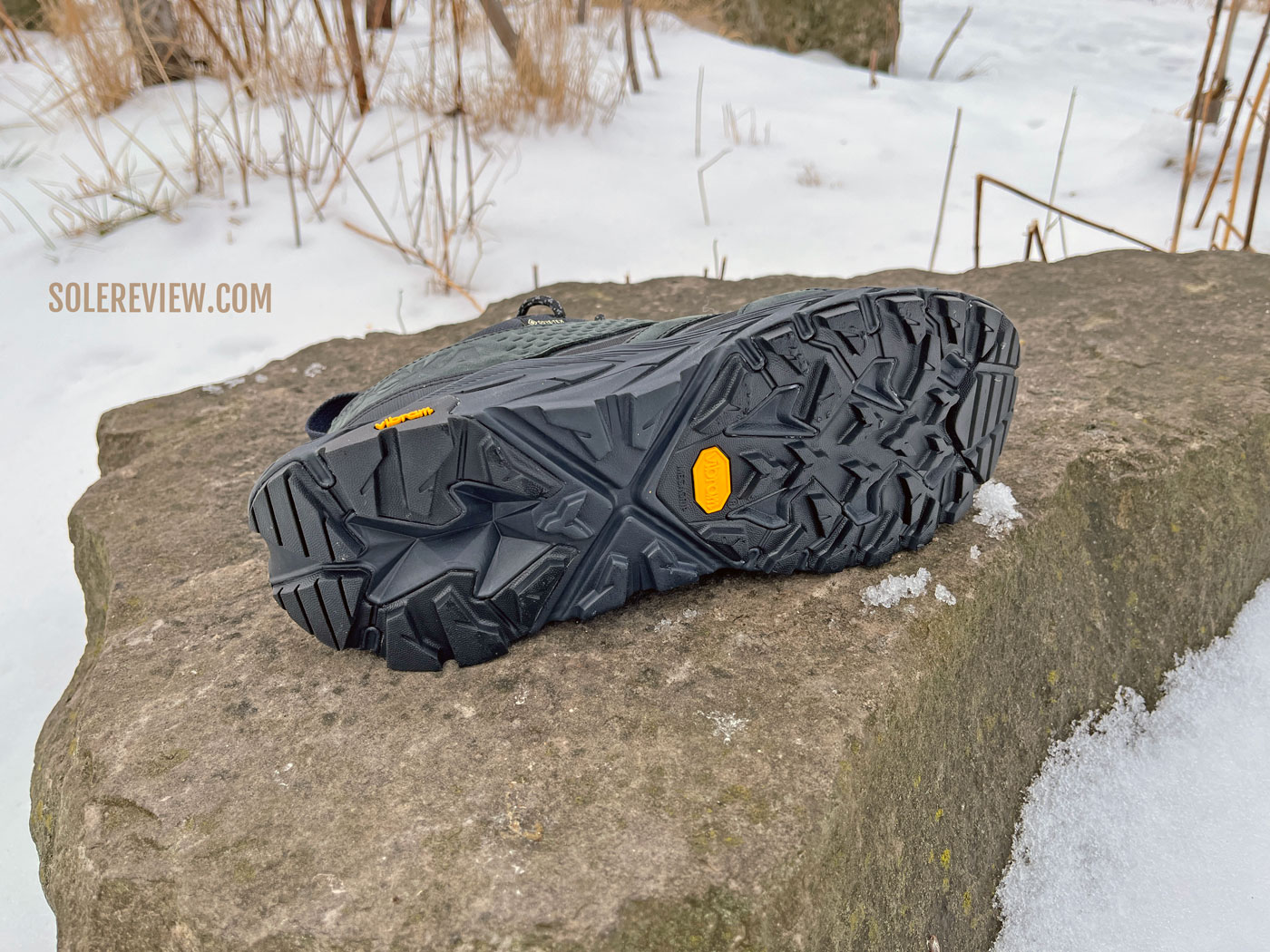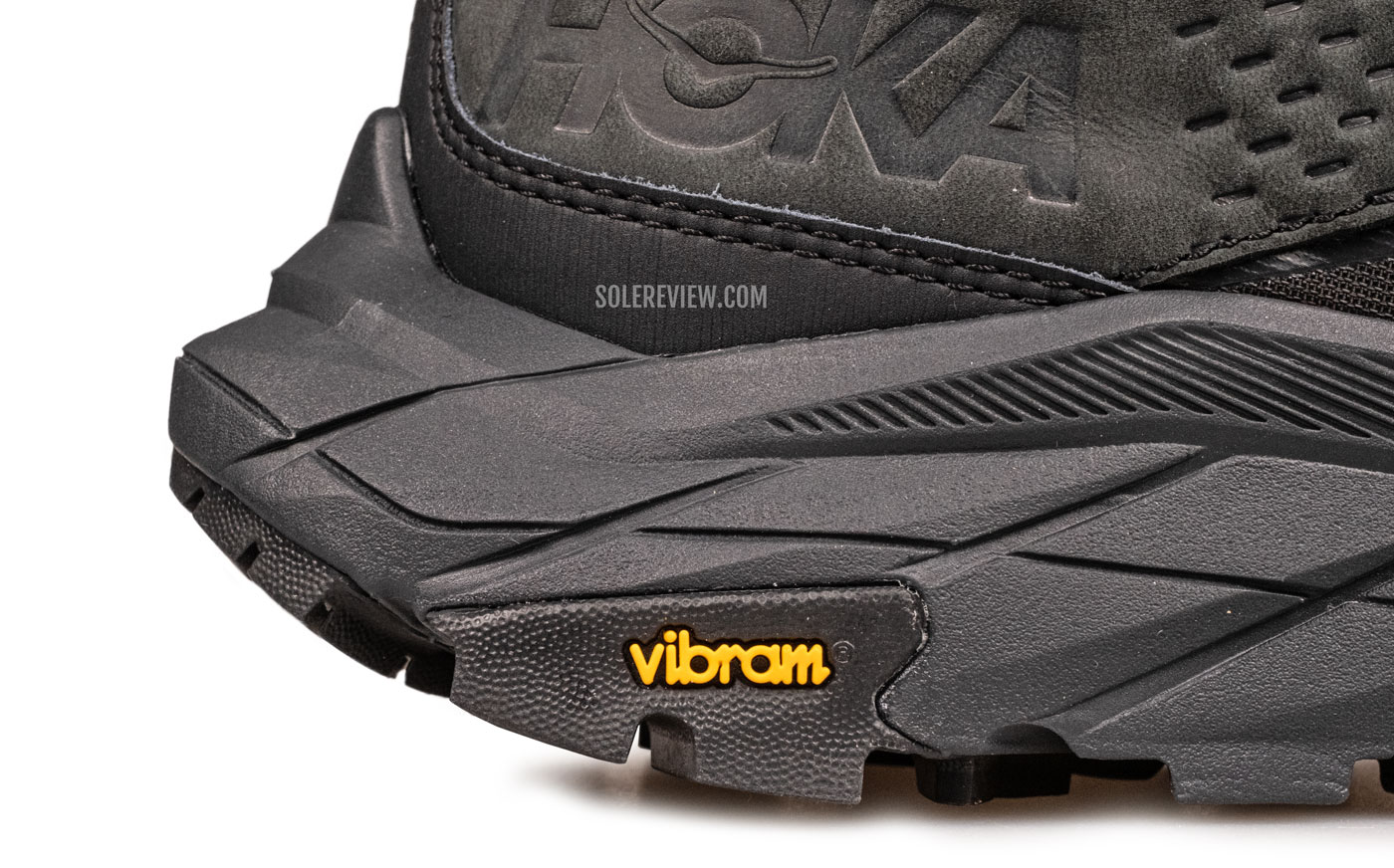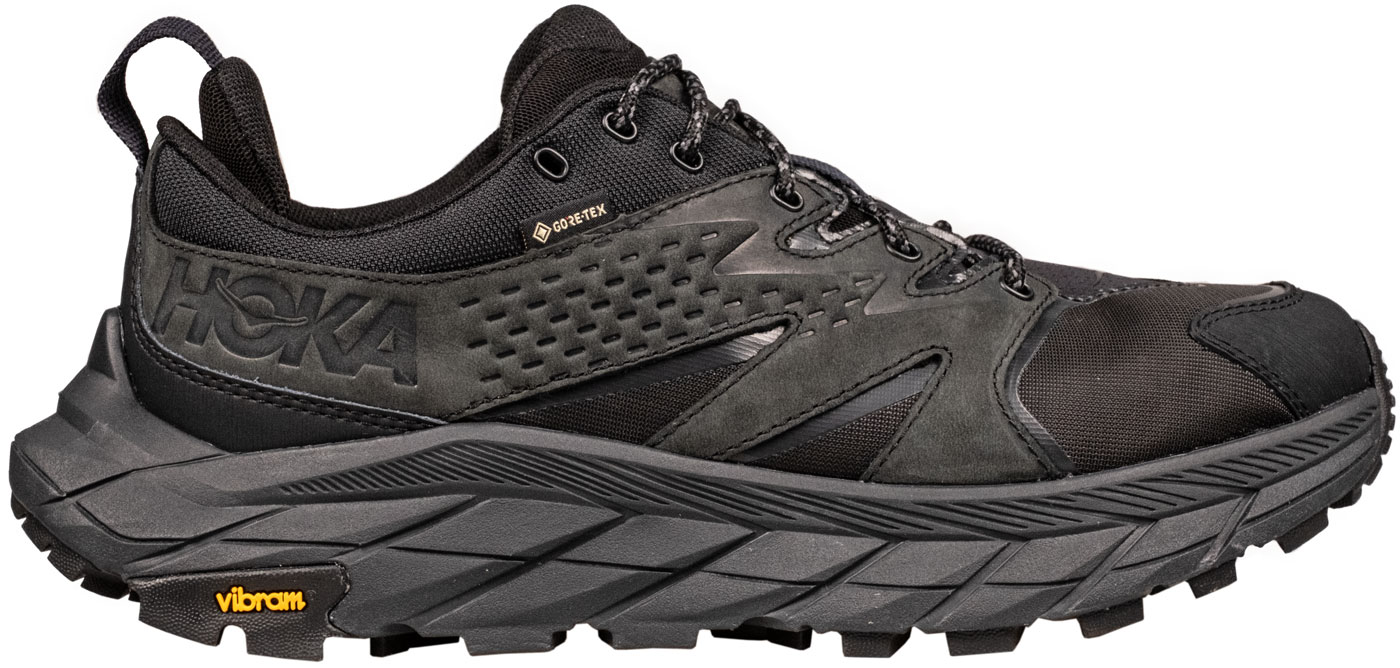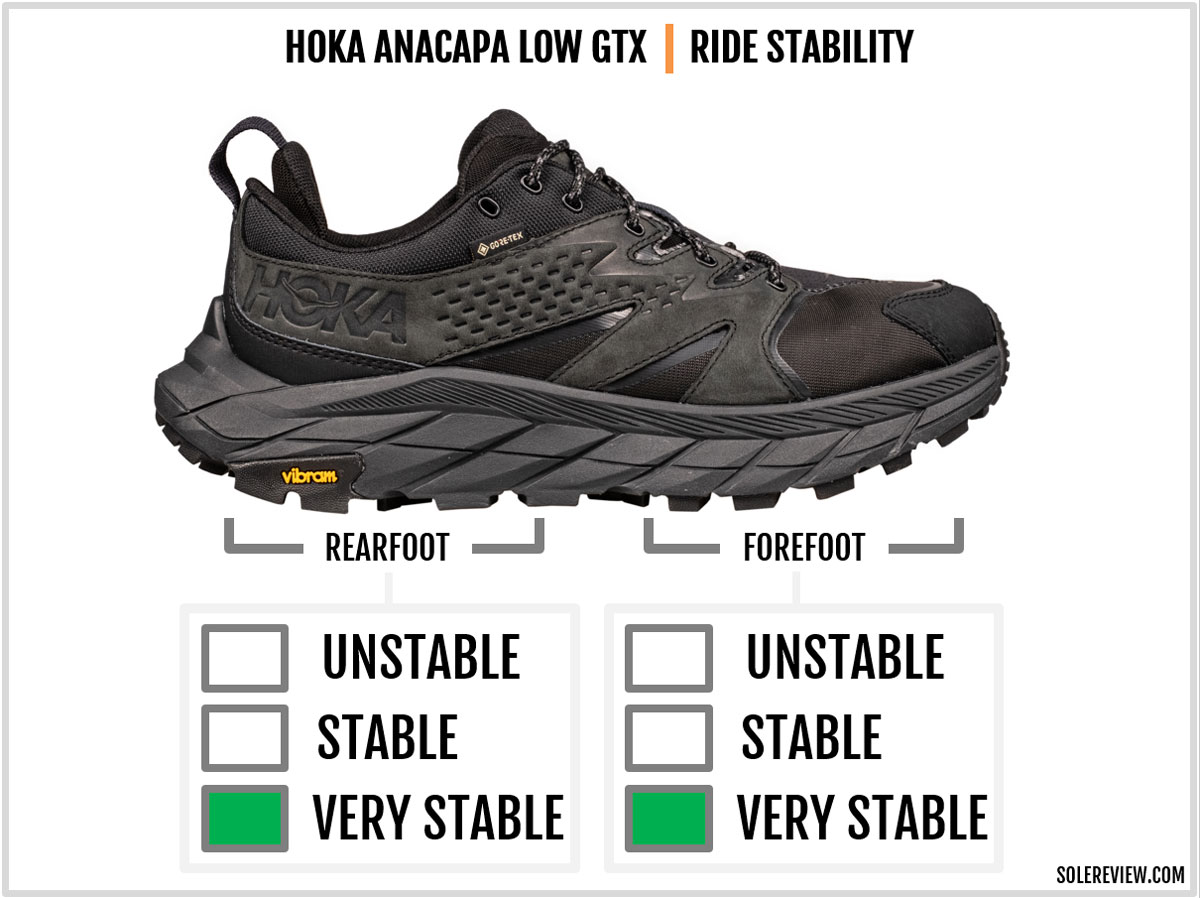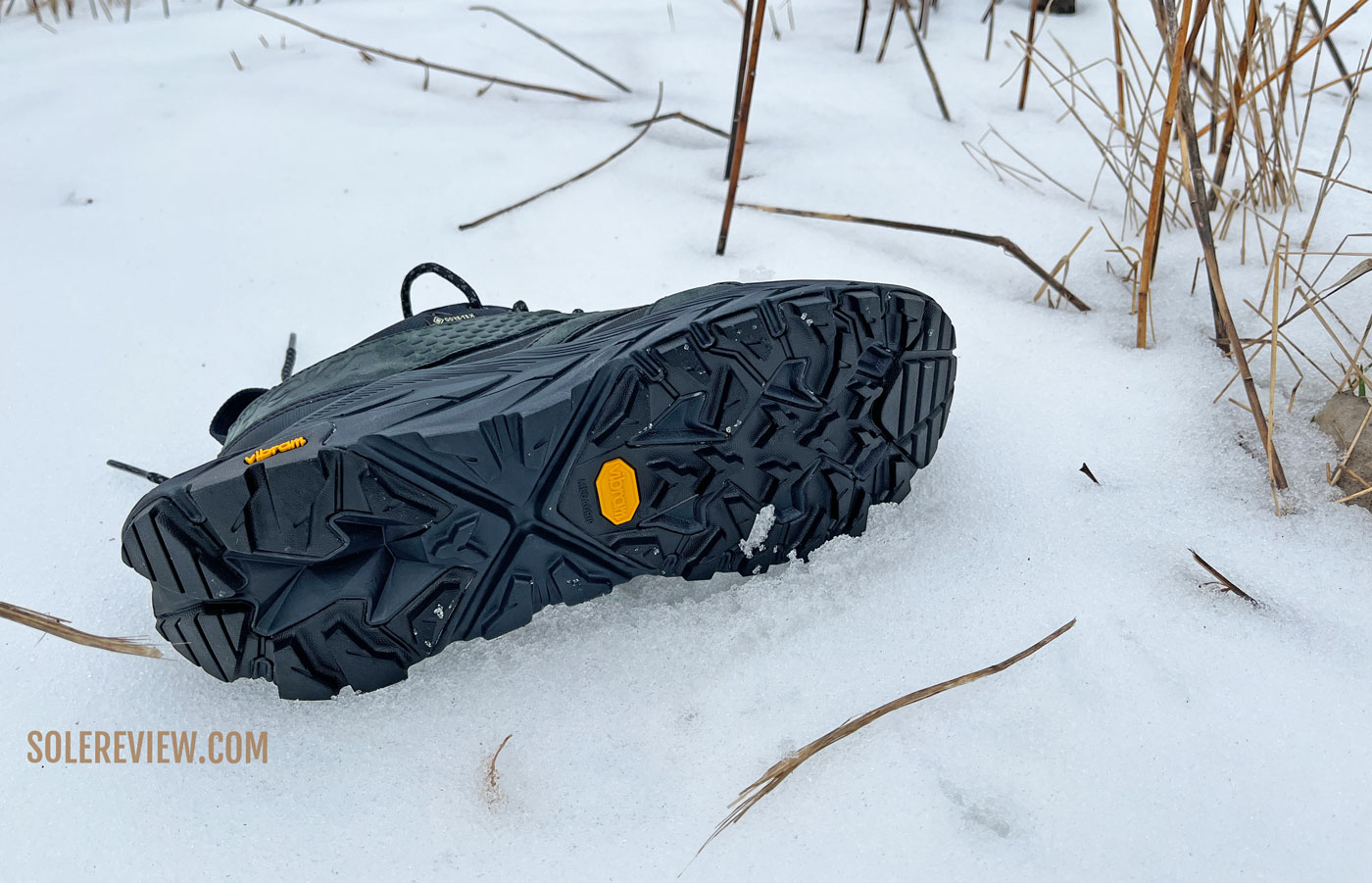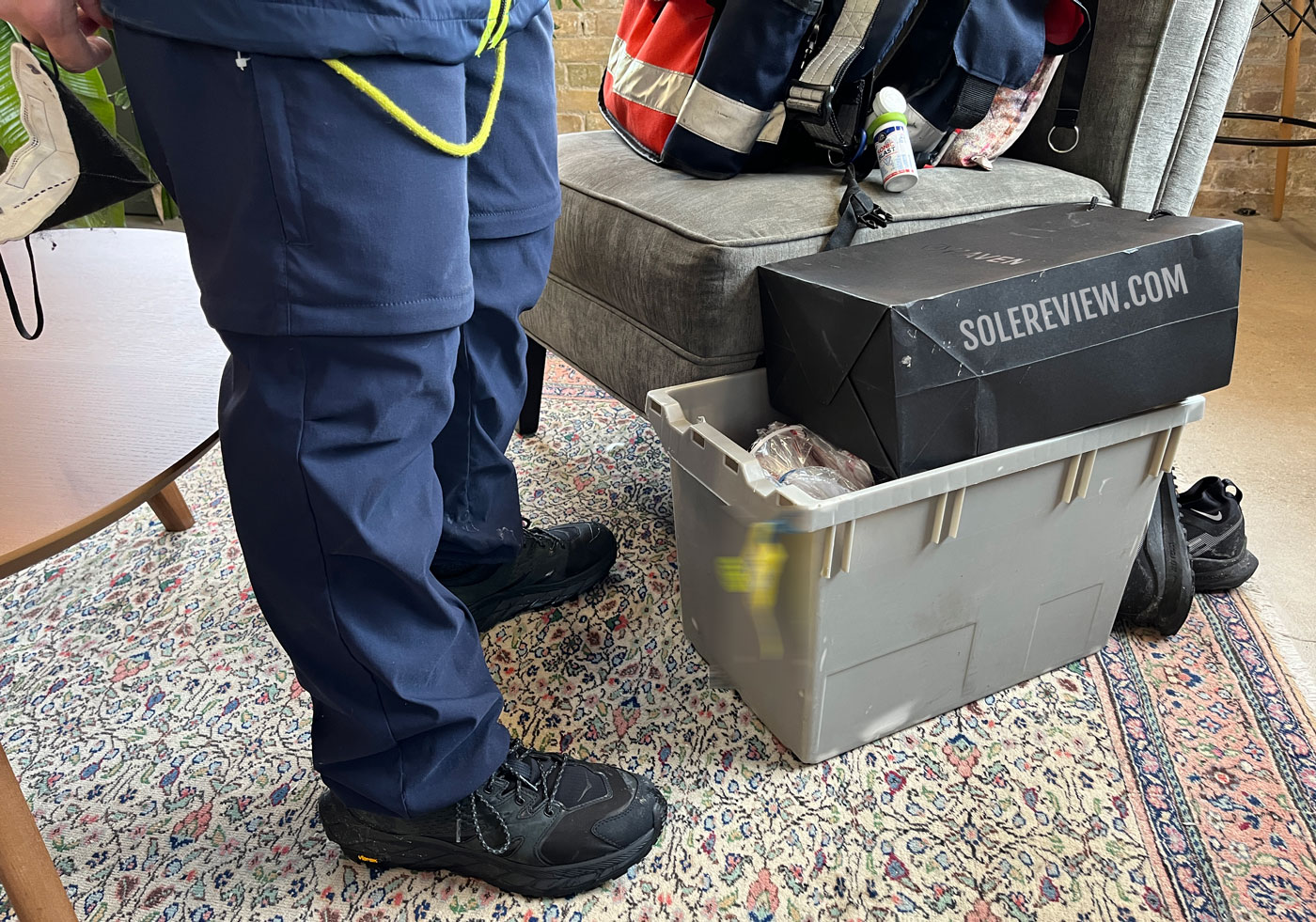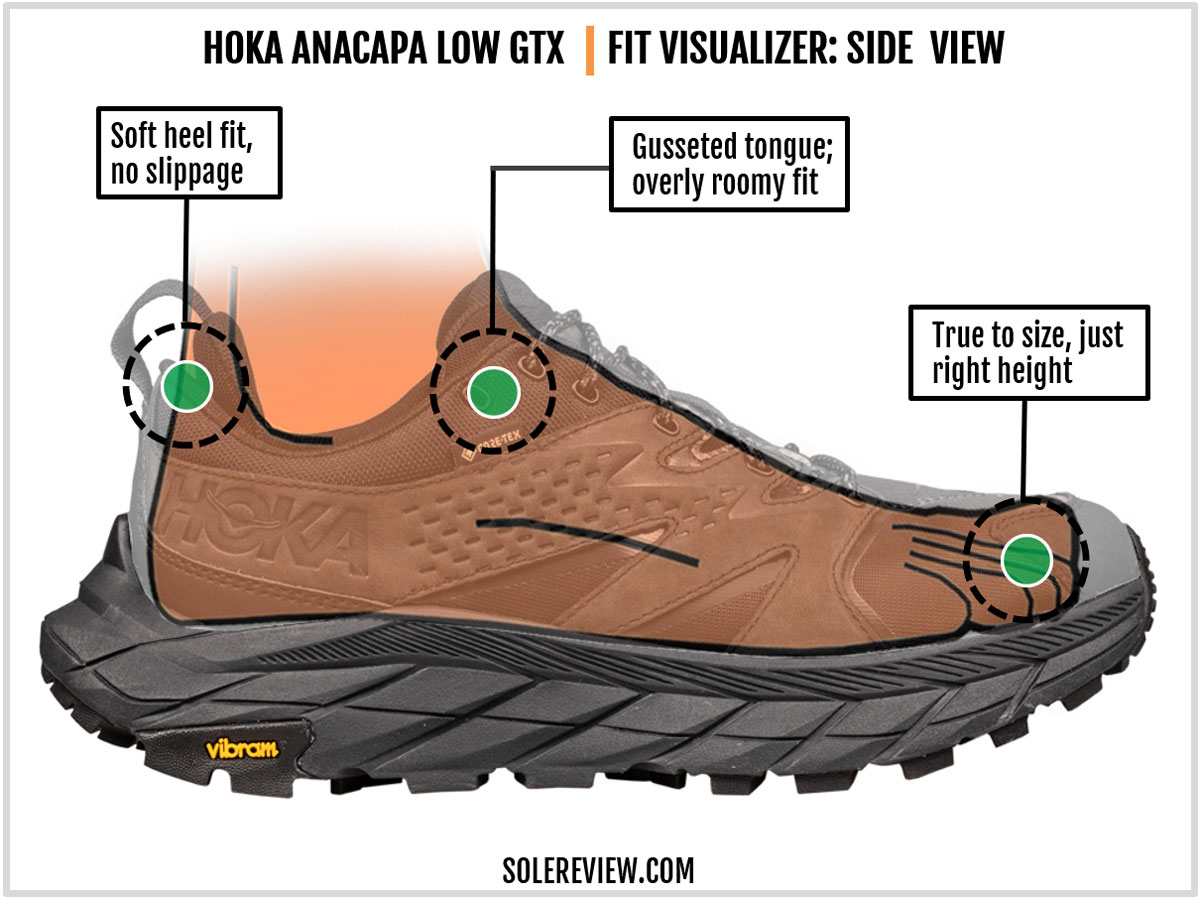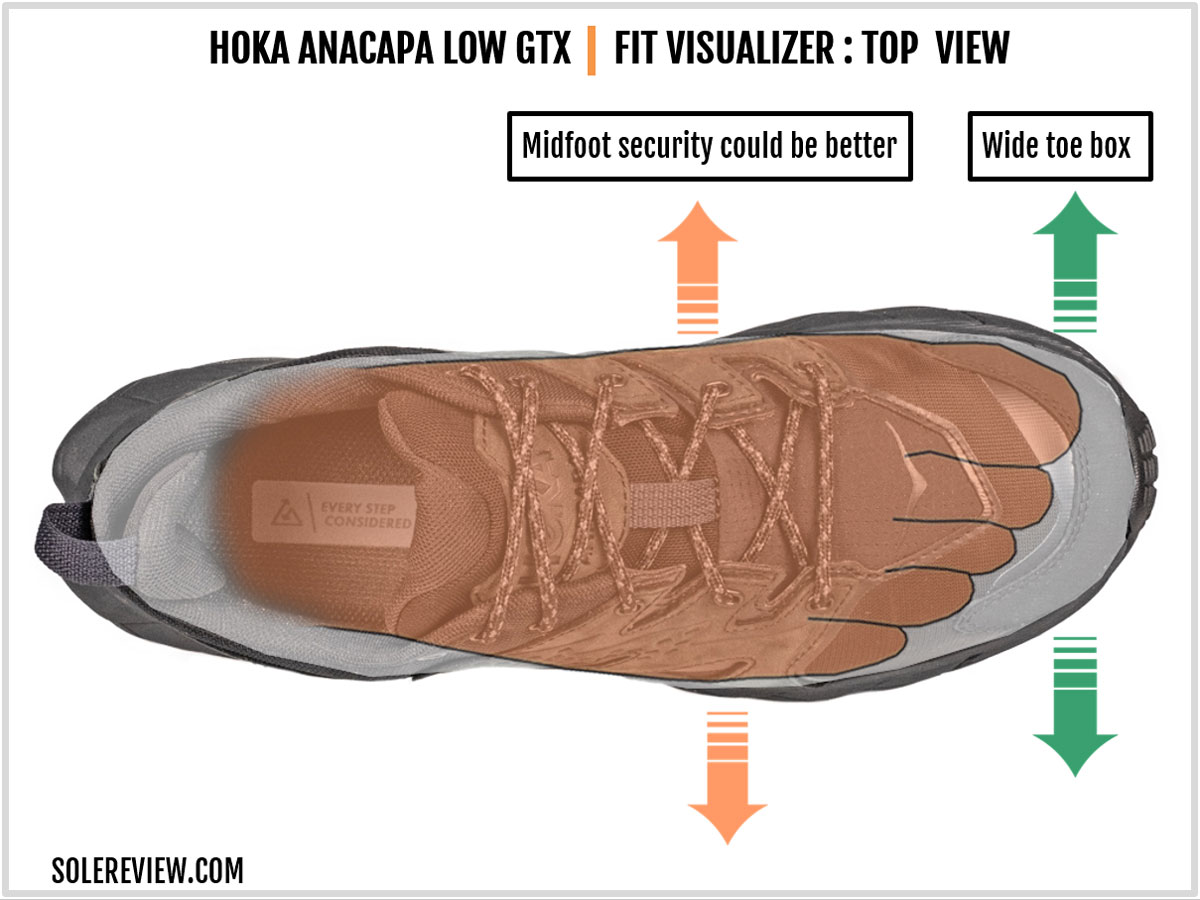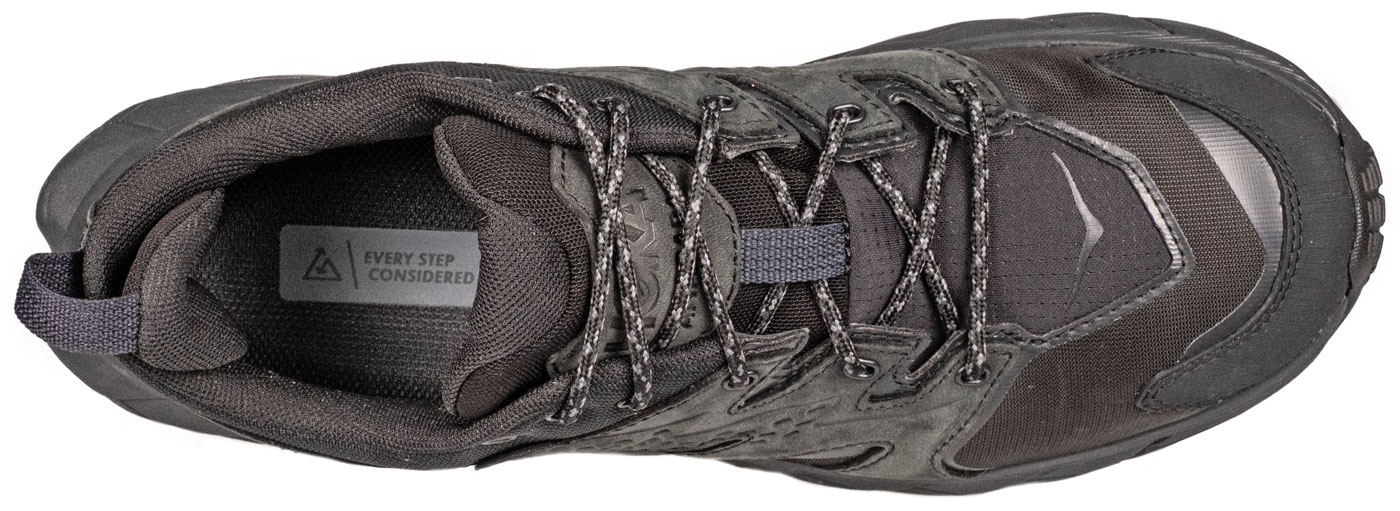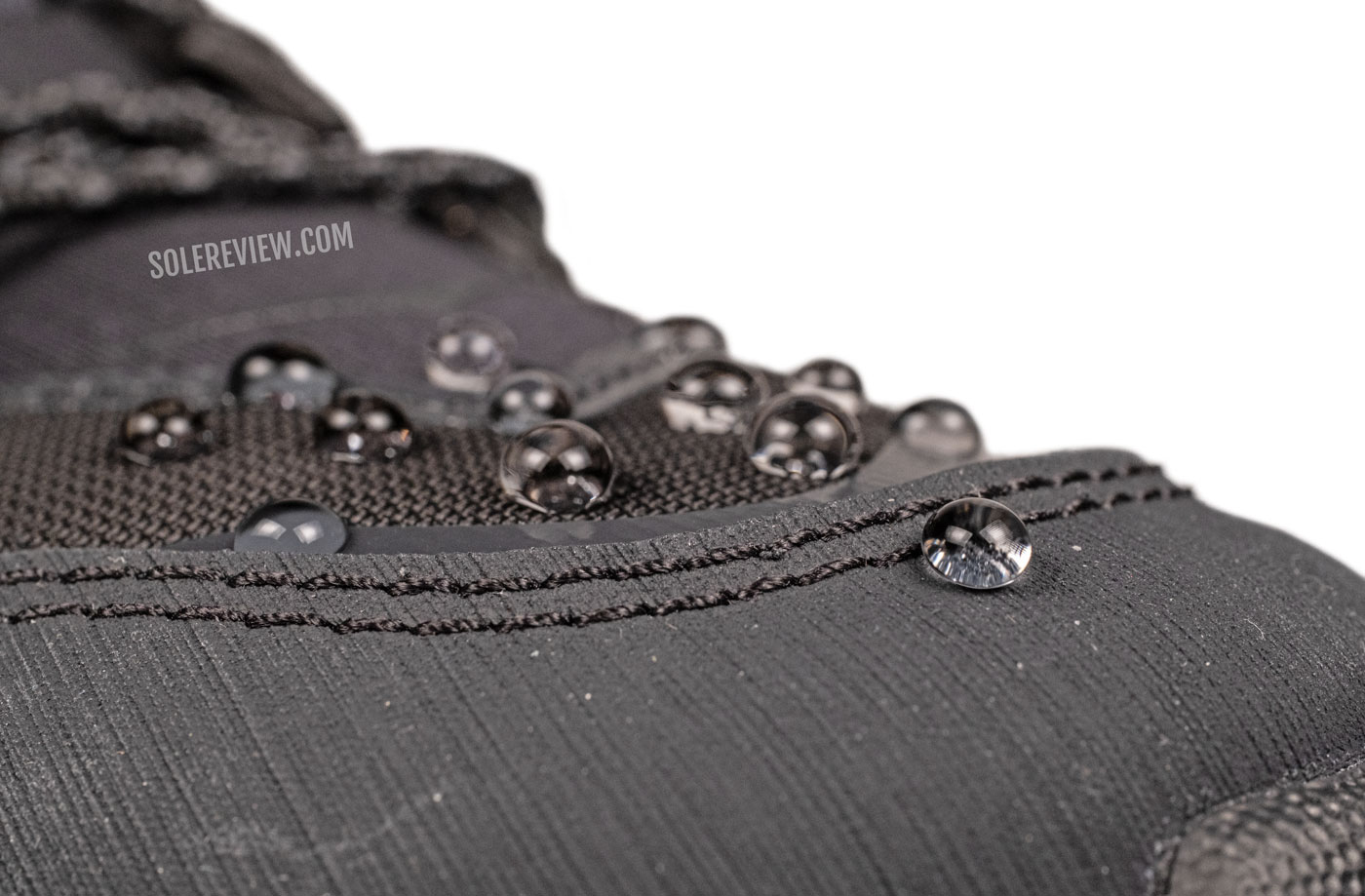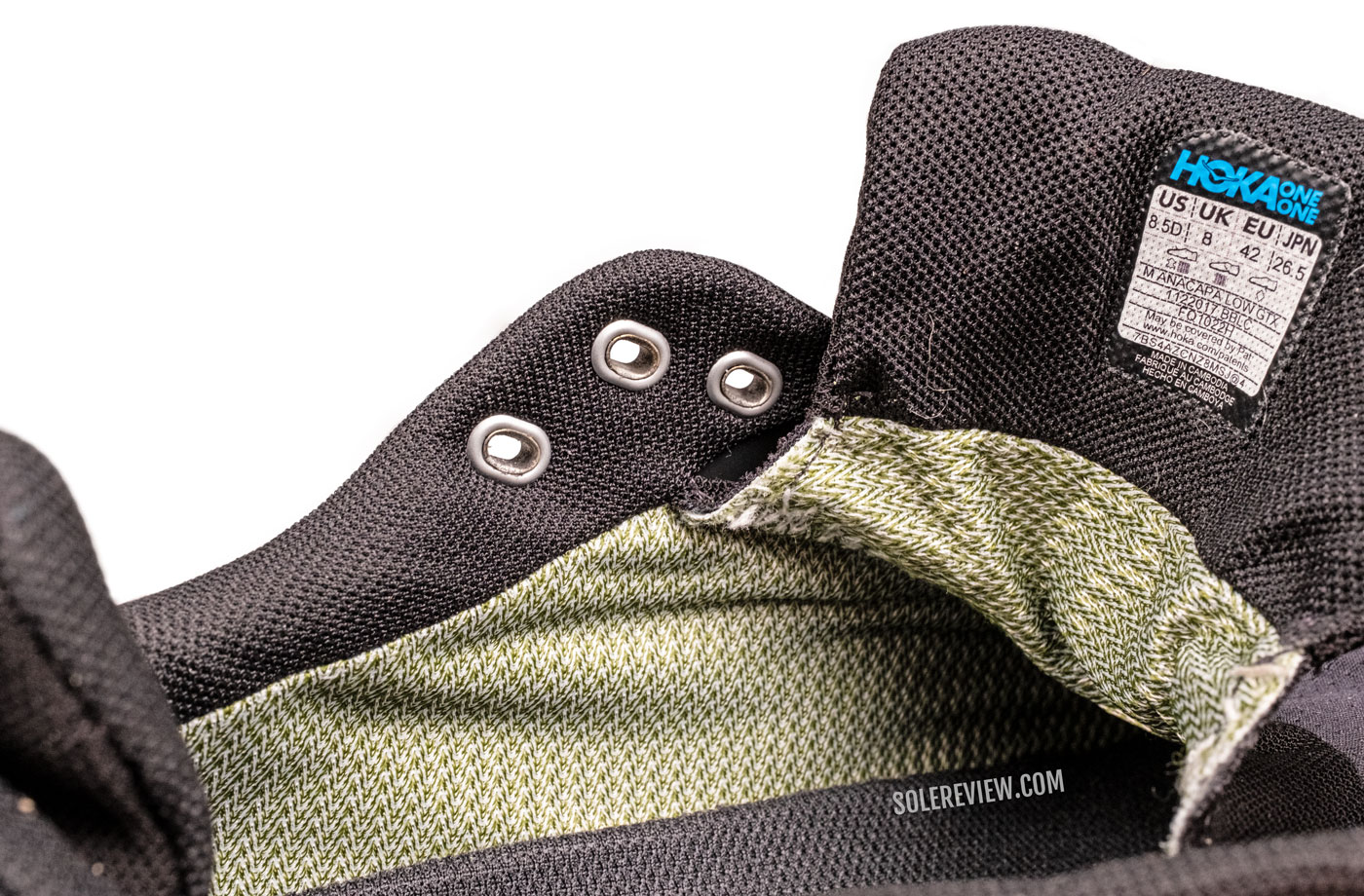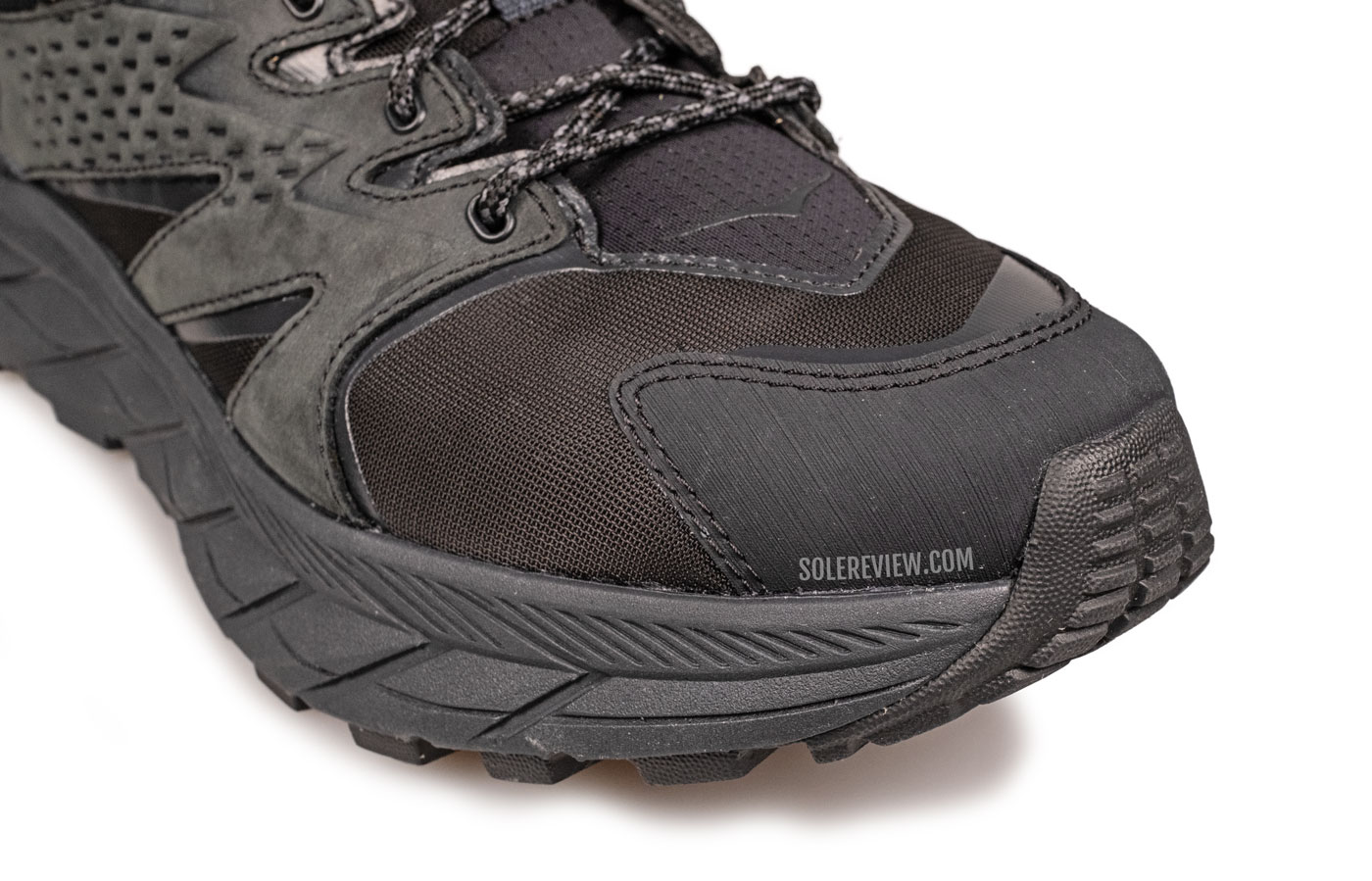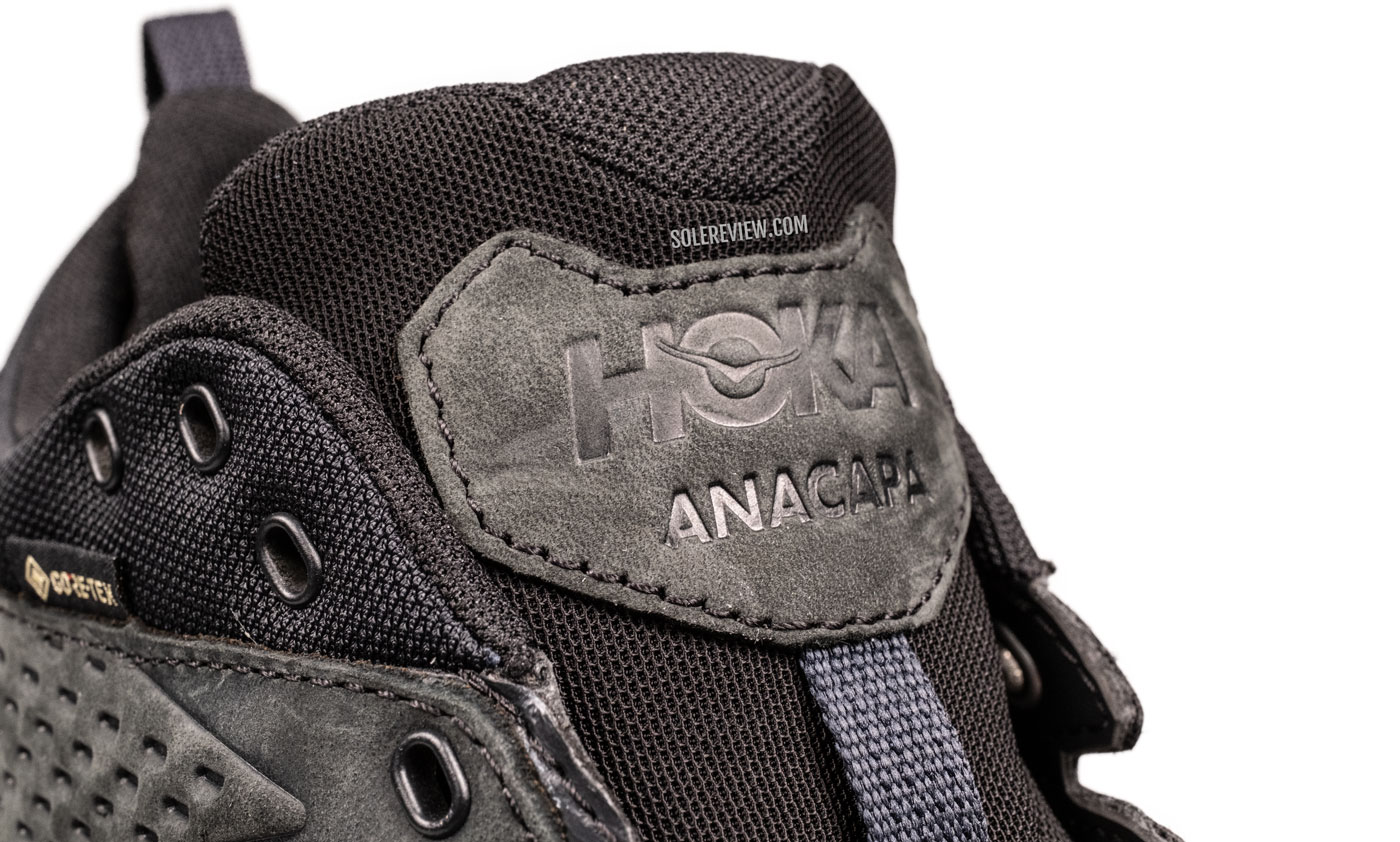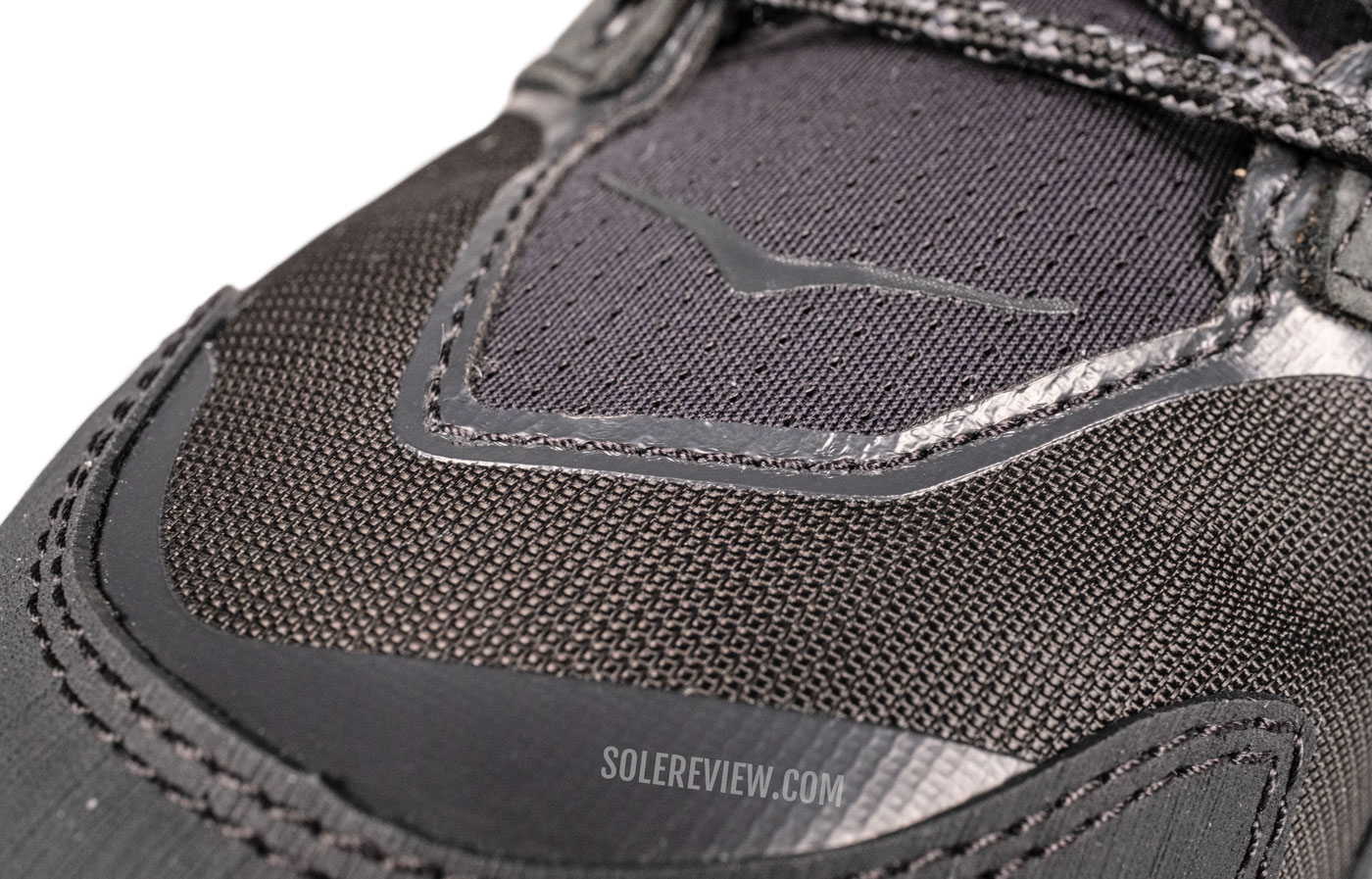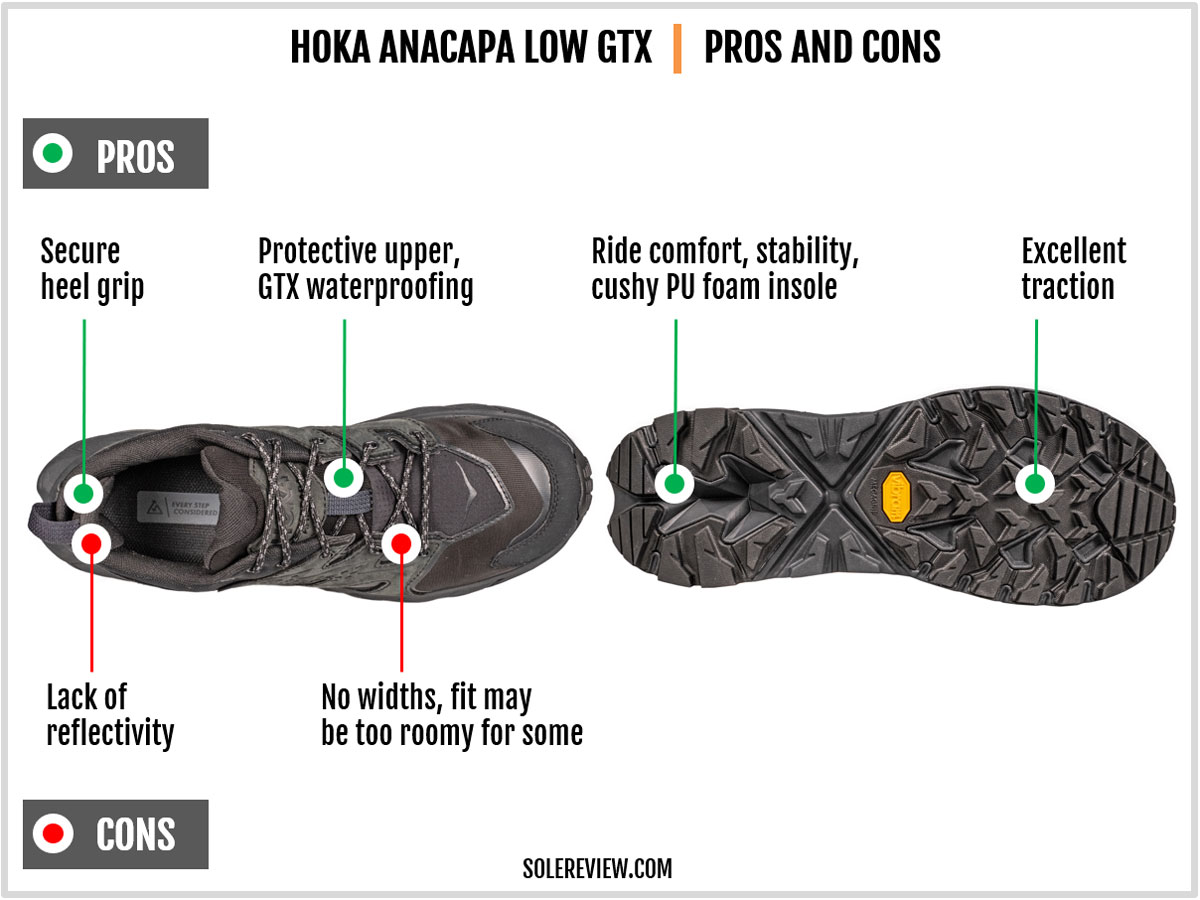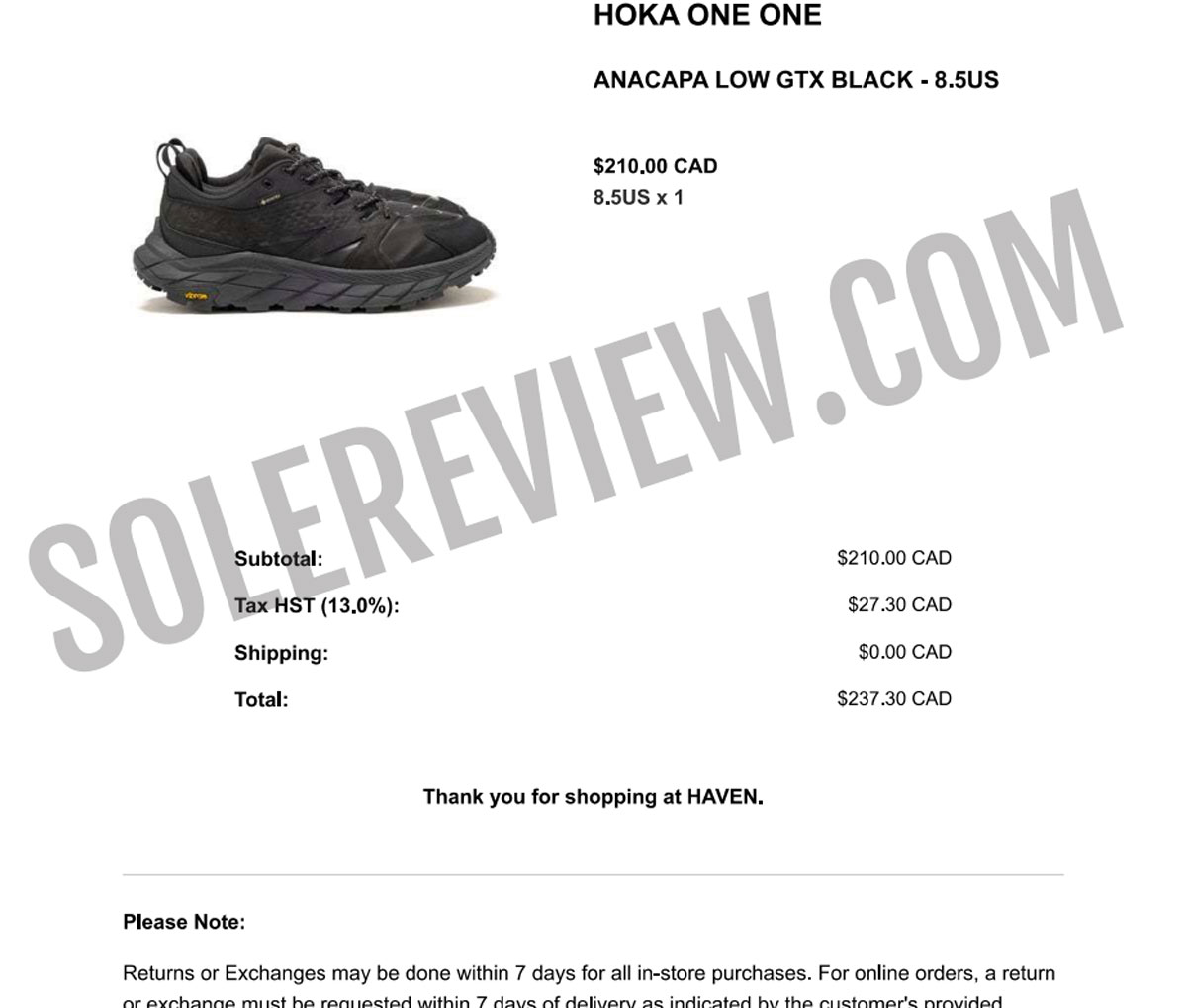
For this review, we purchased the Hoka Anacapa Low GTX at full retail price. The amount is in Canadian Dollars.
In this review:
INTRODUCTION
Some of Hoka’s best products are hiding in plain sight, away from the spotlights of the Clifton, Bondi, and Mach 5.
The said products are not running shoes, but hiking shoes – a natural extension of Hoka’s trail-running origins.
While there are several non-running Hokas worth reviewing, the subject of this review is the Hoka Anacapa Low GTX. It’s a cushioned hiking shoe with a waterproof upper and Vibram Megagrip outsole.
Unlike the Challenger, the Anacapa is not a trail running shoe. Its 14-ounce weight and ultra-wide midsole reduce its appetite for anything that involves speed.
And that’s fair, as the Anacapa isn’t a running shoe, but a hiker and urban commuter that’s very good at what it does.
The Anacapa Low GTX feels unlike any Hoka running shoe we’ve reviewed before. Though the price is higher ($170 retail) than comparable waterproof trail products, this shoe is fully kitted – in no-expenses-spared kind of way.
The waterproof Gore-Tex membrane is the (obvious) highlight of the Anacapa, but there’s a lot more on offer. The upper combines embossed leather panels with a stitched-over synthetic bumper and four different meshes.
Despite the very Hoka-looking midsole, the footbed is anything but. Interestingly, Hoka uses a high-grade PU foam insole instead of the standard EVA sockliner that’s usually found inside a Hoka.
The Anacapa is also a very different Hoka in how it fits. The upper is exceedingly roomy – an observation we also made for the Brooks Cascadia 16 GTX – another waterproof outdoor shoe.
Depending on the circumstance, this can be a good or bad thing to have. It’s great at accommodating thick woolen socks, and gobbles up any aftermarket orthotic you decide to throw in.
On the flip side, the midfoot fit isn’t very secure when worn with thin socks. There’s no optional B (narrow) width either. If that poses a potential problem, just know that the Hoka Kaha 2 GTX is an alternative that delivers a better fit customization.
Hoka’s approach to selling the Anacapa at brick-and-mortar retail is interesting. We bought our pair at a streetwear/fashion store where the Anacapa shared floor space with a colorful medley of sneakers. The white-on-white Hoka Clifton is another shoe that does well in such environments.
And it makes sense. The Hoka Anacapa fits nicely into the ‘urban commuter’ or ‘urban utility’ category – a rugged silhouette that’s good for all-terrain while standing up to the rigors of everyday use.
This is also a distribution strategy that Norda has also used to its advantage. Despite being a relative newcomer, the Norda brand has managed to make inroads into the lucrative streetwear market with its Norda 001 shoe.
At a conceptual level, the Norda 001 and Hoka Anacapa are somewhat alike. The Norda 001 markets its combat-inspired upper material (Dyneema mesh) and comfortable Vibram-fitted midsole, whereas the Hoka Anacapa sells its rugged go-everywhere appeal. They also offer dependable performance on the trail and road.
In a way, both are the footwear equivalent of an SUV with all-wheel drive – they are versatile enough for everyday use, but with a higher tolerance for abuse than your standard running shoe.
Tactical boots like the Nike SFB and Oakley Assault boot have also tasted moderate success in this space. The Salomon XT6 accidentally found its niche in this space, and has now become an unlikely commercial hit.
This is a smart distribution strategy. In a cookie-cutter sporting goods store, it’s easy for the Hoka Anacapa to get lost in a sea of Merrell Moab and Keen Targhees. Not so much when your next-shelf neighbors are the Nike Air Max 2003 and New Balance 992.
THE MIDSOLE DESIGN AND RIDE EXPERIENCE
If we had to compare the Anacapa’s ride character to a shoe that we’ve reviewed on this site, the Brooks Cascadia 16 GTX comes to mind.
The Cascadia is lighter and softer than the Anacapa, and it’s a trail running shoe – which the Anacapa isn’t. However, the Cascadia’s wide midsole, rigid forefoot, and overall neutral behavior have shades of the Hoka shoe.
When we tested the Brooks Cascadia 16, we found the ride to be softer than imagined. We had a similar experience with the Hoka Anacapa as well. From the outside, the EVA midsole foam is firm to the touch – not unlike the Challenger.
However, the step-in comfort was a refreshing surprise. The Anacapa’s insole is a significant upgrade over the standard Hoka EVA footbed.
But that’s not what the Anacapa has – under the foot is a plush sockliner made of PU foam. The effect is almost memory foam-like, and its works beautifully during low-impact activities like walking or standing.
Hoka claims that the insole is derived from 50% Soybean Oil, so it’s backed by some eco-credential too.
The midsole may not be very soft and not at all responsive, but it excels at functional cushioning. The thick foam stack offers protective comfort as well as insulation from the cold. The firm nature of the midsole also makes the Anacapa a very stable shoe to walk in.
Without any cushioning bias, the ride feels very neutral and planted.
The outsole traction is excellent, and we have the Vibram Megagrip to thank. We’ve come across the Megagrip outsole on many shoes before, notably on New Balance’s trail assortment. It’s a soft rubber compound with excellent grip (except for ice) while being reasonably resistant to wear and tear.
Here, the outsole has long 5 mm lugs in a widely-spaced layout.
The lugs are separated by copious amounts of negative space and grooves, thus affording the outsole a fair degree of articulation. This layout also minimizes clogging.
Also, this isn’t a one-piece outsole either. The rear and front outsoles are separate sections.
The lack of stiffness can be attributed to the generous articulation on the outsole and midsole. The mid-section of the outsole is exposed EVA foam with a deep ‘X’ grooving. This cross-shaped groove adds a bit of torsional flexibility without (negatively) affecting stability.
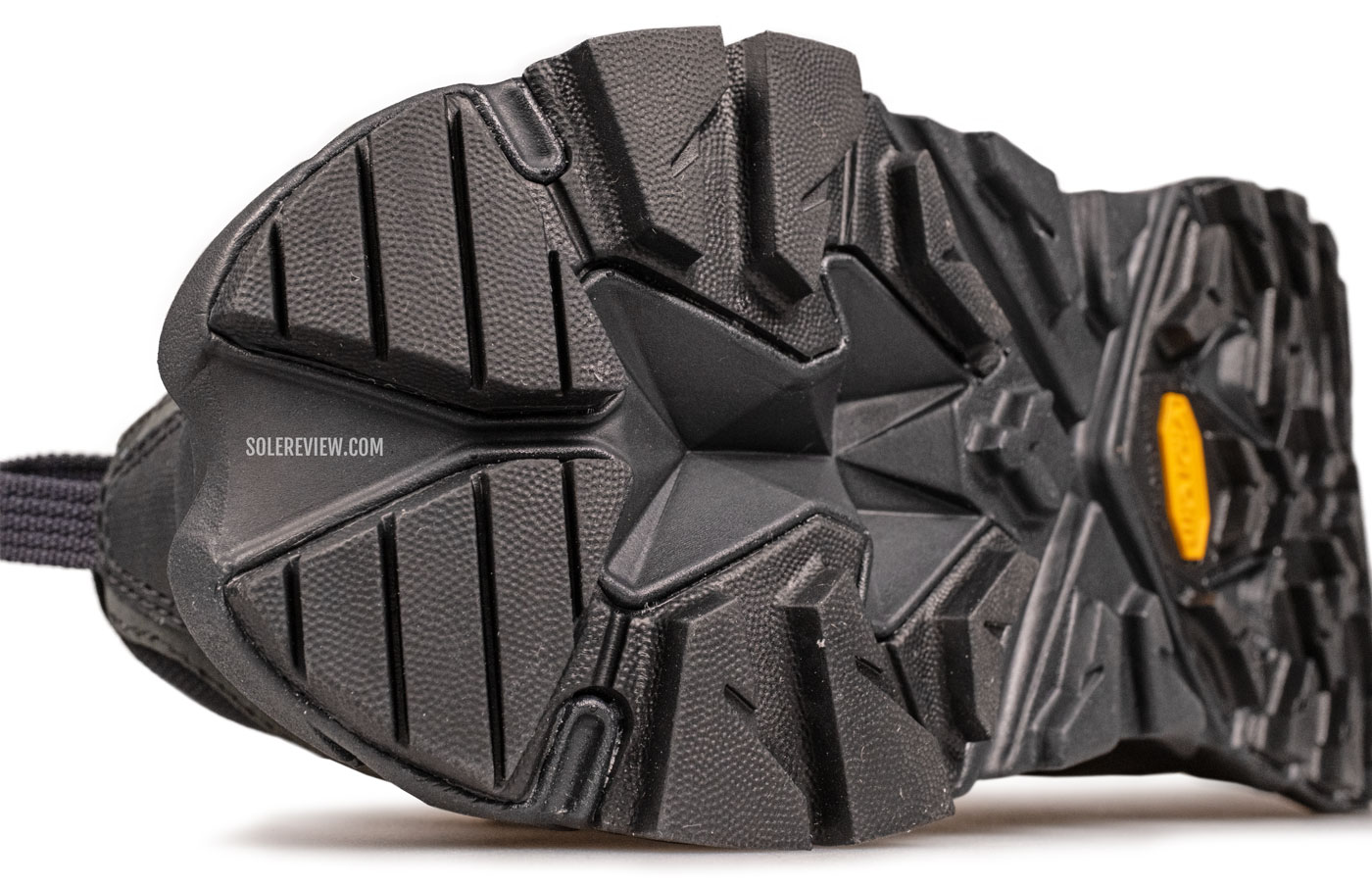
The grooves between the lugs allow the outsole to flex with the midsole. A hollow cavity under the heel helps with the transitions.
The extended heel is balanced with a high spring or bevel, so the loading happens smoothly without catching the ground. The hollow cavity under the heel does its job by keeping the weight centered.
Like most Hoka shoes, the Anacapa has a rocker midsole with an inflexible forefoot. So there’s a fair bit of ‘assist’ during the gait cycle, thus making it easier for the foot to ‘roll forward’.
This is a good thing for a walking or hiking shoe to have, as it reduces the workload of the foot. The 5 mm heel-to-toe offset works together with the rocker profile for smooth transitions.
The Hoka Anacapa’s ride isn’t very enthusiastic in the way it delivers its cushioning, but it feels reassuring.
The just-right cushioning is great for long hikes, walks, or even standing all day. The outsole traction is excellent, and the midsole offers a high level of stability.
Finally, if you were wondering if the shoe feels heavy because of its 14-ounce weight, the simple answer is no. The Hoka Anacapa doesn’t feel bottom-loaded; the weight distribution between the upper and sole feels cohesive, so the weight isn’t noticeable, if at all.
IS THE HOKA ANACAPA LOW GTX DURABLE?
At the time of writing this review, the Anacapa Low is undergoing long-term testing in the field.
It’s worth pointing out that this isn’t just any testing; the Anacapa is averaging between 20,000-25000 steps a day on the feet of a postal worker.
So far, there haven’t been any concerns – the midsole and outsole are as good as new, and the layered upper has proven very durable.
THE UPPER DESIGN AND FIT
At the beginning of this review, we did say that the Anacapa had a fit like no other Hoka. The difference is astounding.
Unlike most Hoka shoes, the insides are extremely roomy, almost excessive.
While the sizing fits true, there’s too much space on the sides and above the foot. The lacing can only do so much, and an option for a narrow fit (B width) is not available.
However, this isn’t necessarily detrimental to the performance of a walking shoe.
For one, a roomy fit accommodates the increased foot volume that happens during a day hike or long walk. There’s also ample room for a thick or structured Orthotic, as well as warm wool socks.
If the shoe still feels loose, we recommend that you give the Hoka Kaha a try. The Kaha 2 has a better fit because of the adjustable width lacing (eyelets in two different positions for two lacing rows) and the longer lacing reach over the forefoot.
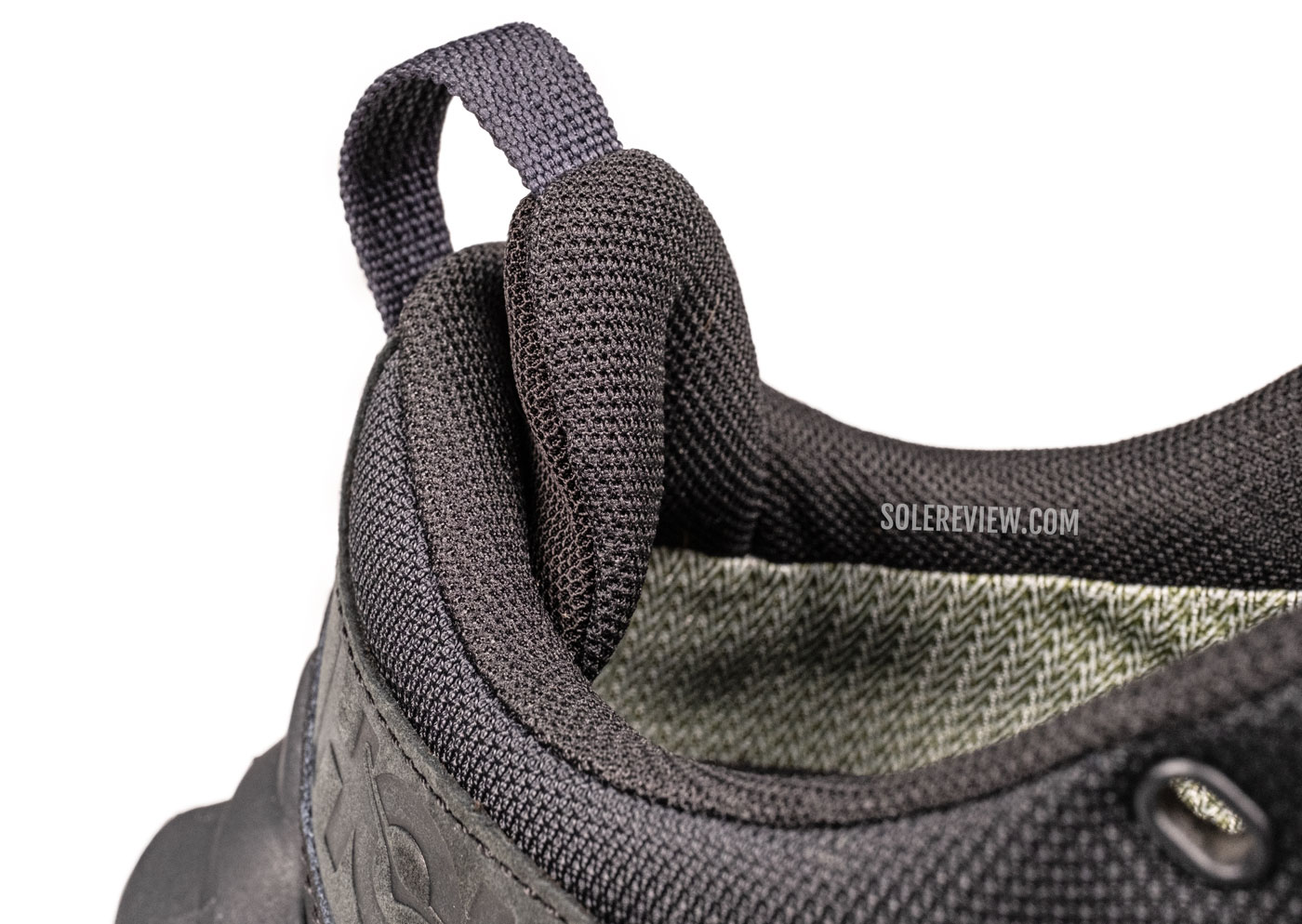
Ok. The ‘pod’ heel doesn’t slip, but it doesn’t have the same sensory effect as a standard heel collar.
It’s important to put in a word or two about the heel fit. The Anacapa has a foam pod that’s stitched over the heel collar. This works as intended, and keeps the foot locked in. The stiff internal counter helps too. The large pull loop is also functional and helpful.
However, it feels loose as the pod creates a slight gap on the sides. On a normal collar, the mesh lies flush over the foot. Here, the sensation is just different.
Here’s what you need to know – the heel does not slip. There’s the option of using the runner’s loop or ‘heel lock’ via the last eyelet.
Hoka sells two versions of the Anacapa. There’s the waterproof Gore-Tex version, the one we’re writing about.
This shoe has better all-season versatility, whereas the ‘Breeze’ model has open mesh for better ventilation. Both models are also sold in a mid-cut, or a boot, silhouette.
The GTX upper doesn’t breathe at all, so it’s important to understand which shoe works best for your personal needs. For example, the Hoka Anacapa GTX is an excellent winter shoe for trudging through slushy and mud, as well as rainy days.
The waterproofing works as advertised. On the outside, the hydrophobic mesh beads the water.
On the inside, the Gore-Tex membrane prevents the water from soaking the foot. The tongue is completely gusseted to prevent the debris and moisture from getting in. The upper lacks a gaiter attachment point, so get the mid version for a higher ‘water line’.
The ventilation is poor because of the thick and waterproof upper, so the cooler ‘Breeze’ version of the Anacapa is a better choice during summer.
The designers seemed to have a Carte Blanche to work on the upper, and the result is a very protective exterior. The toe-box is guarded with a thick, stitched-over synthetic. Leather is applied liberally over the midfoot and rearfoot, and it also connects with the lacing.
As for the lacing, the Anacapa gets hiking shoe-style metal eyelets and round laces.
The round eyelets make the shoe quick to lace; a leather patch on the tongue absorbs the top-down pressure and creates a protective barrier over the mesh.
Without this patch, laces can rub against the mesh and gradually damage it through friction.
The tongue is generously padded and is softer than it appears. The top uses a three-mesh construction. A softer mesh extends partially over the forefoot (see picture above) to reduce stiffness during flexing.
Except for the take-it-or-leave-it fit, the Hoka Anacapa’s upper is very well executed and replete with thoughtful design features.
PROS AND CONS
As a hiking and walking shoe, the Hoka Anacapa excels on various terrains.
There’s ample cushioning for the road, as well as the stability and traction that an off-road environment demands. The PU insole is excellent, and we wonder why Hoka doesn’t use it for all its shoes.
The Gore-Tex waterproofing is nearly foolproof, and the cavernous upper accommodates any Orthotic or Smartwool socks. On the flip side, the midfoot fit isn’t as secure as we hoped it to be.
SHOES SIMILAR TO THE HOKA ANACAPA LOW GTX
Besides the non-waterproof Anacapa Breeze, the Hoka Kaha 2 is the Anacapa’s closest match.
A couple of differentiating factors sets the Kaha 2 Low GTX apart. It has a wider Vibram Megagrip outsole, and uses a nearly all-leather upper with a lacing system that offers fit customization.
The Kaha’s lacing extends over the forefoot and uses speed loops – a feature that the Anacapa lacks. The fit security is better, with greater upper durability because of the leather panels.
Only the Kaha Mid 2 has the heel ‘pod’. The Kaha Low has a standard heel collar made of a soft mesh – not very different than a Hoka Clifton.
The outsole footprint is wider than the Anacapa, so the Kaha 2 offers a higher level of stability. The outsole traction and articulation is on par with the Anacapa.
The Brooks Cascadia 16 shares a few traits with the Anacapa, so that too, is an alternative.

